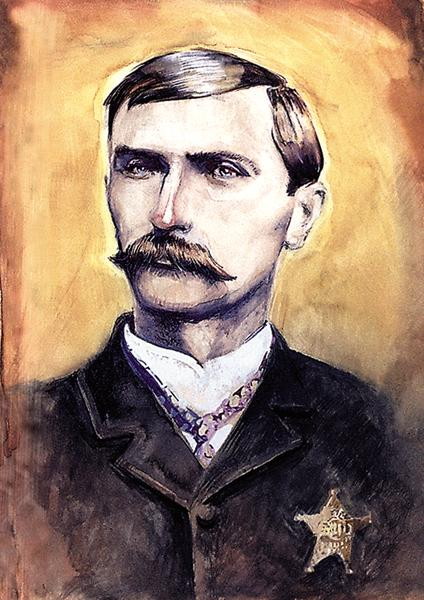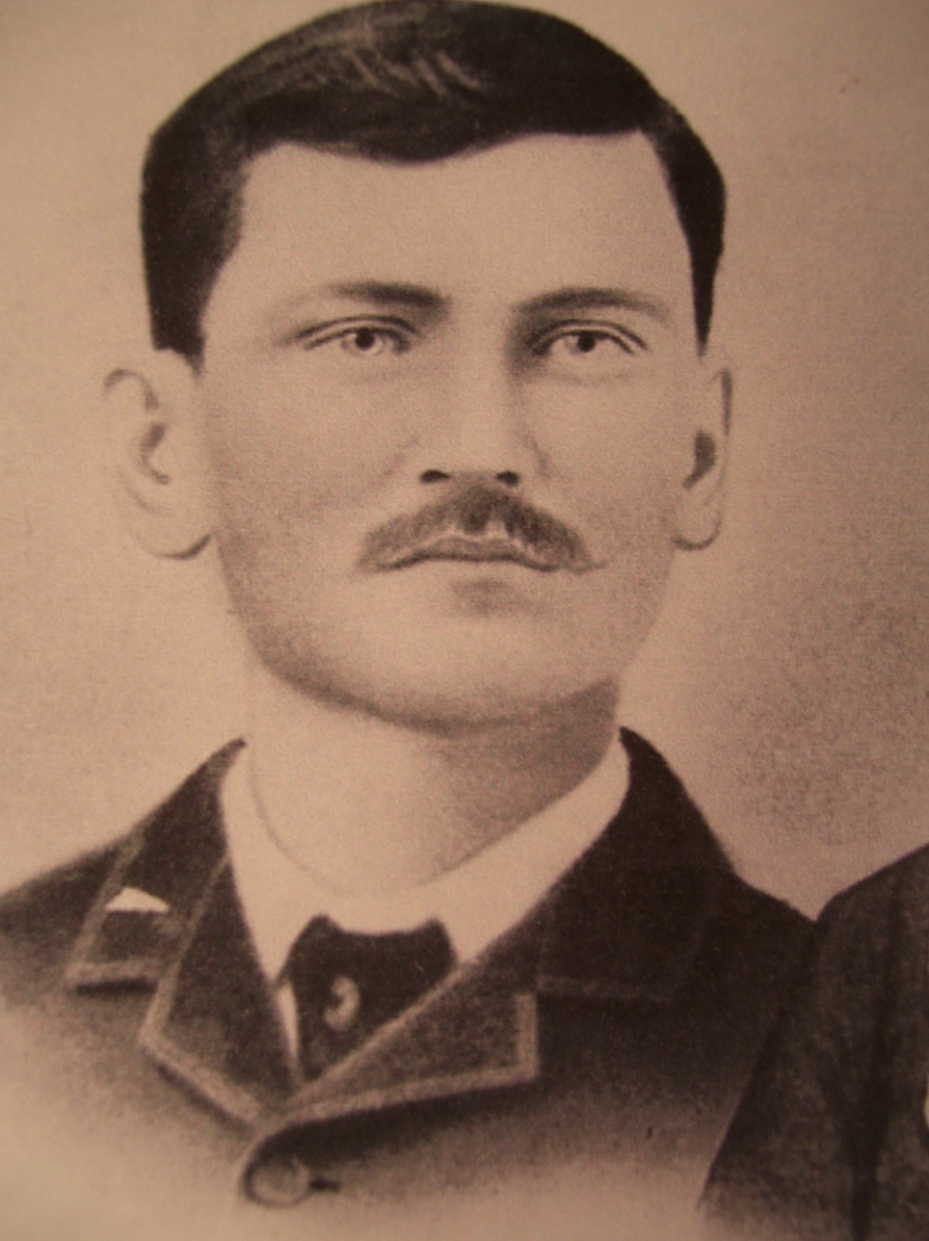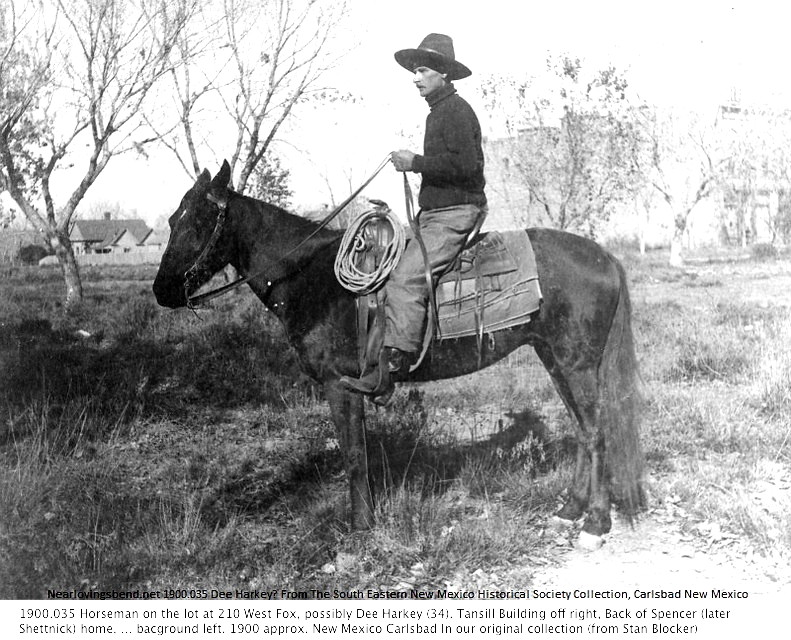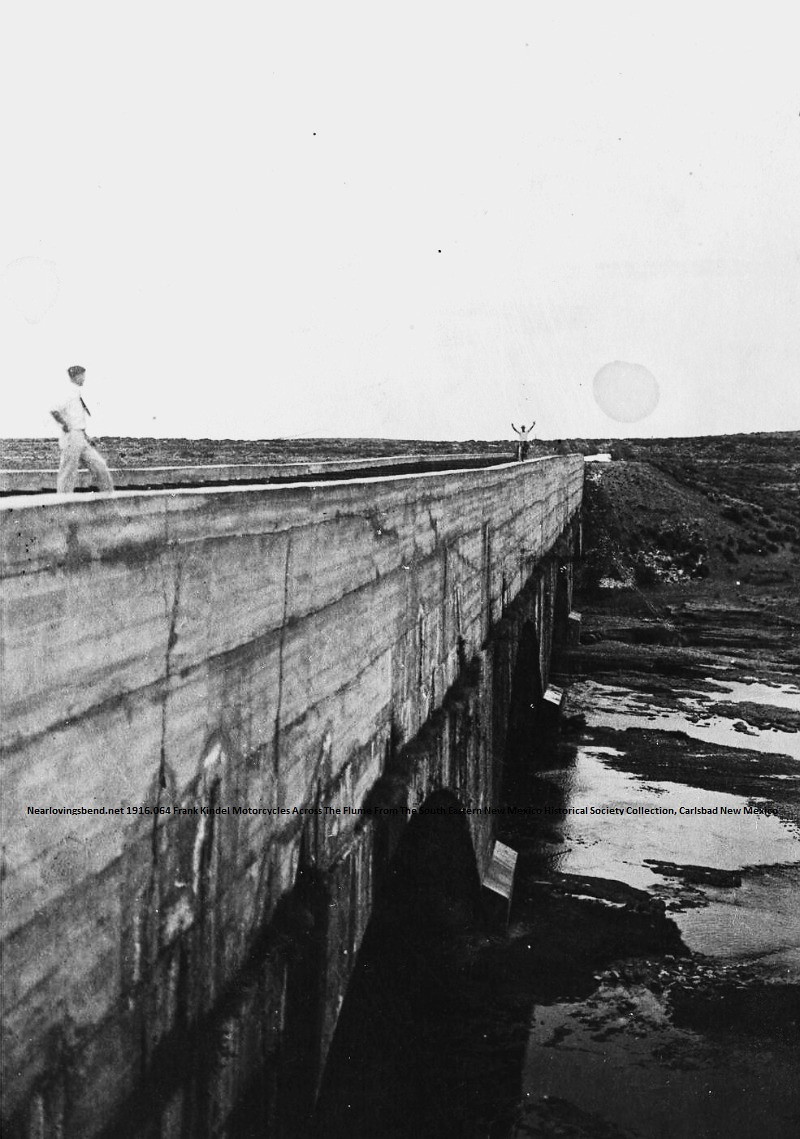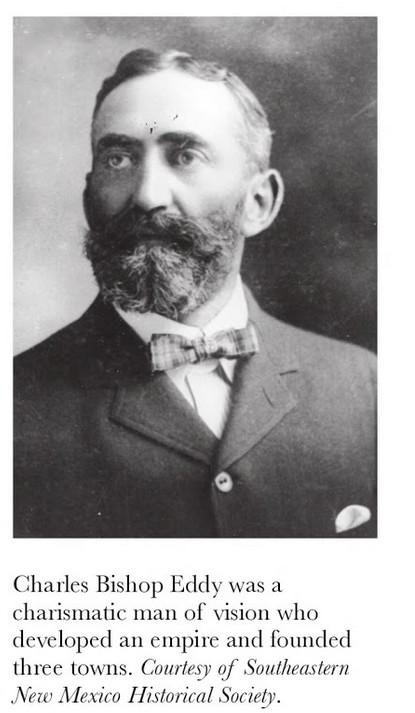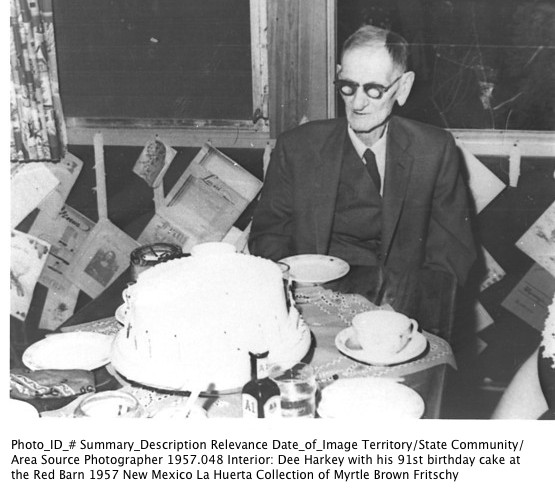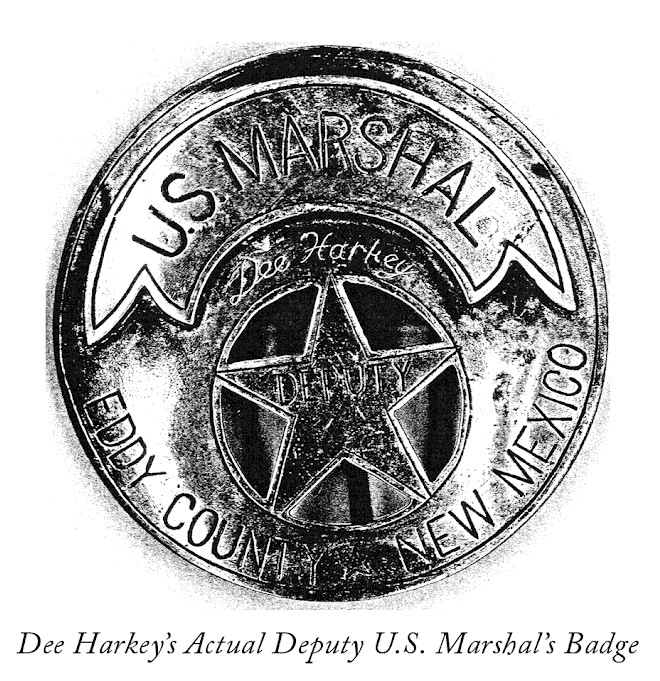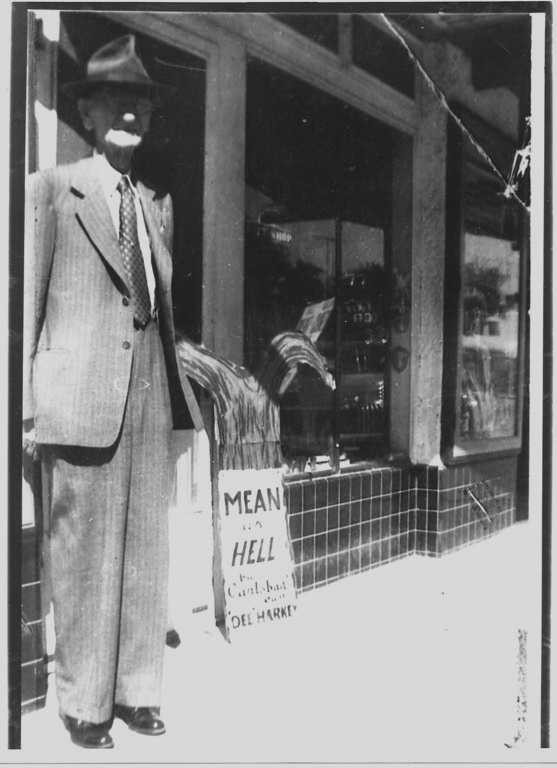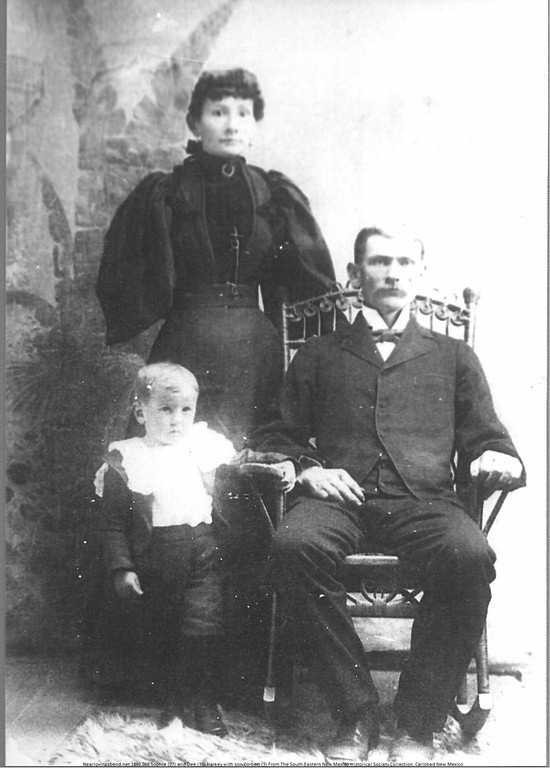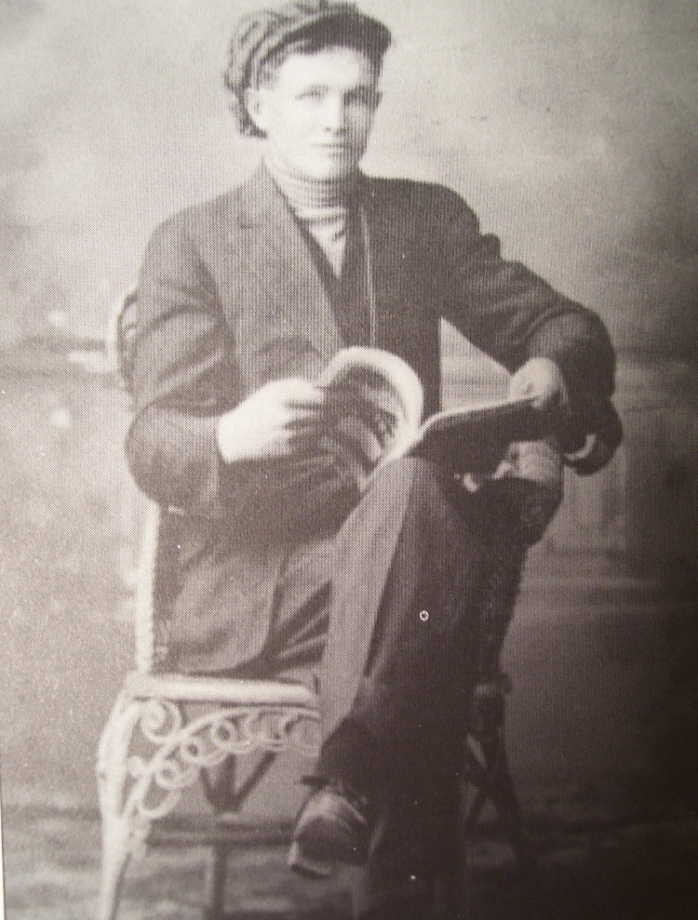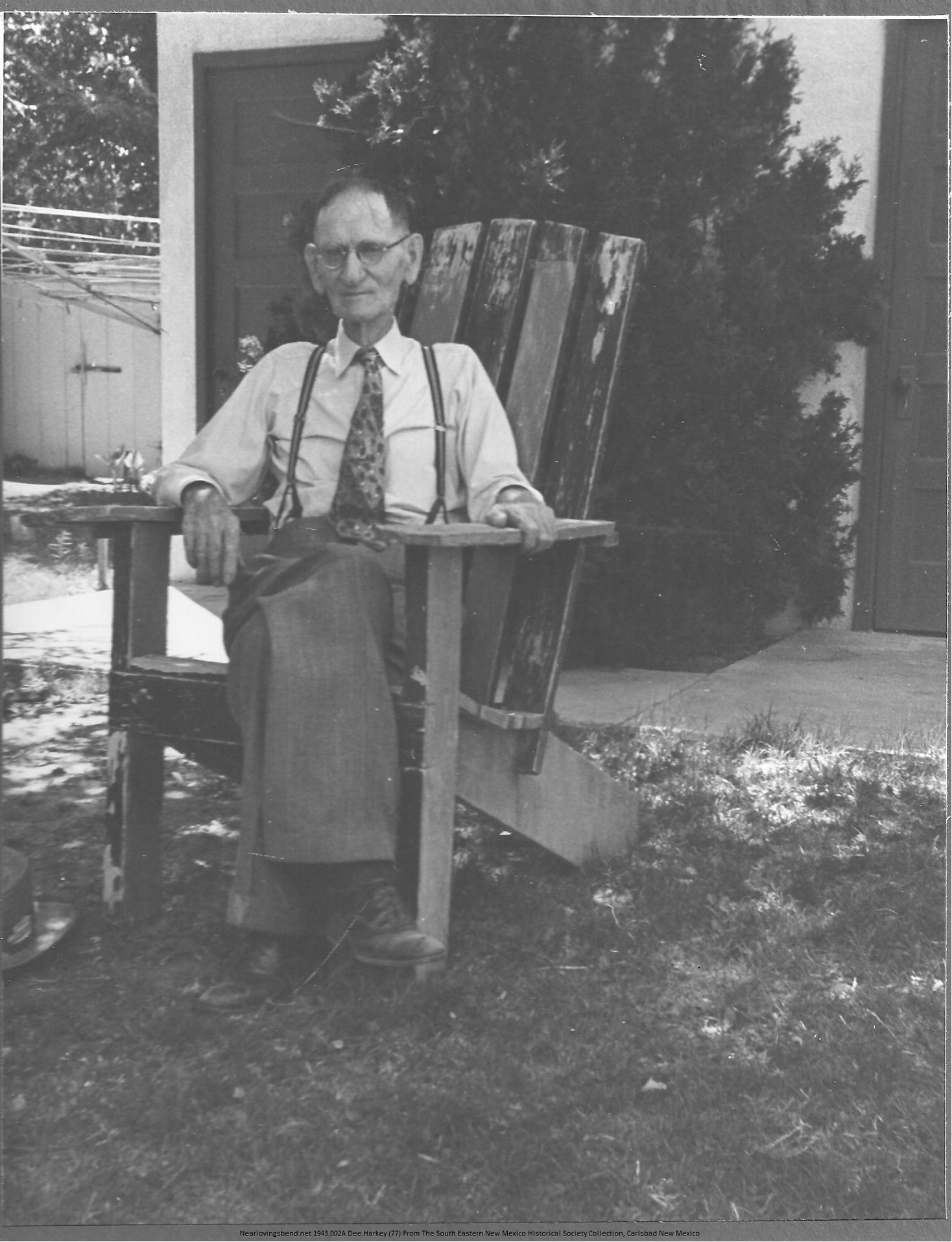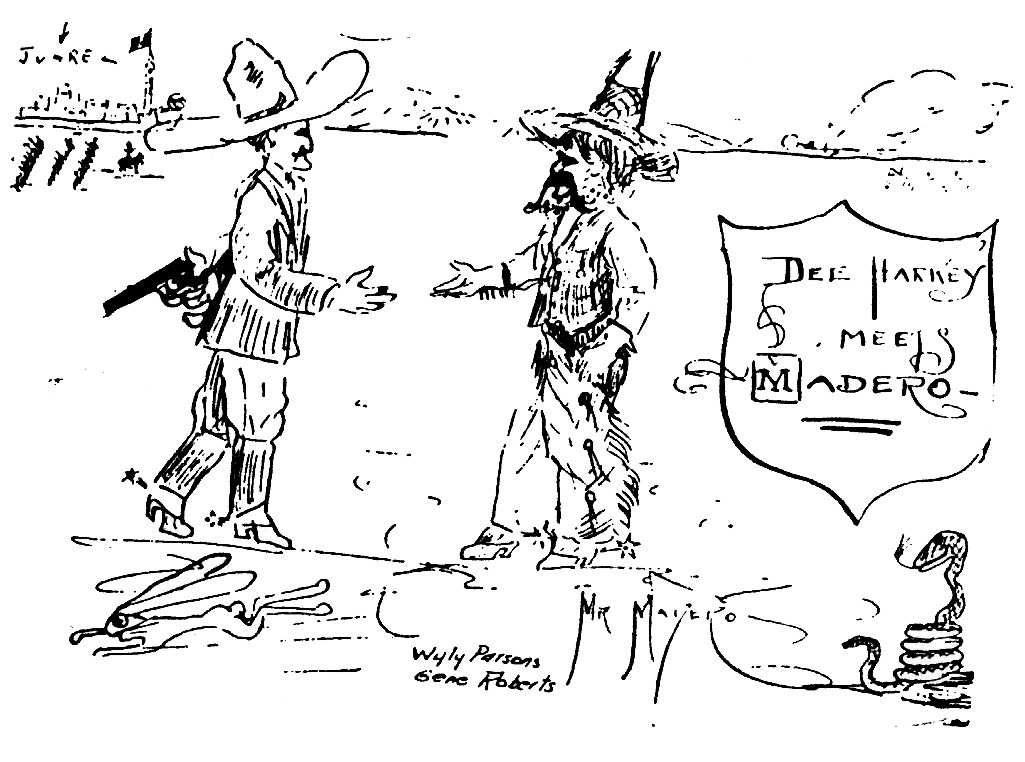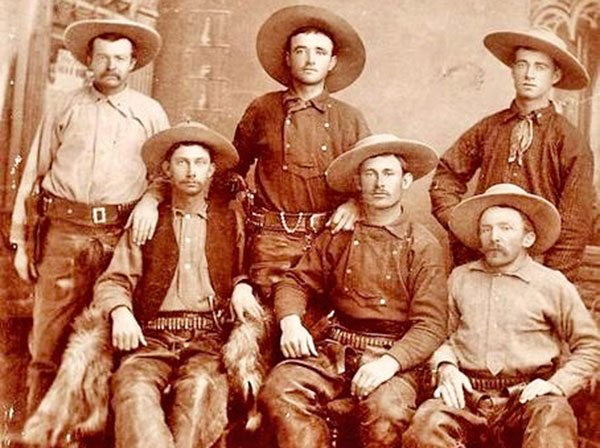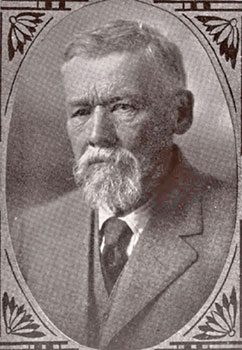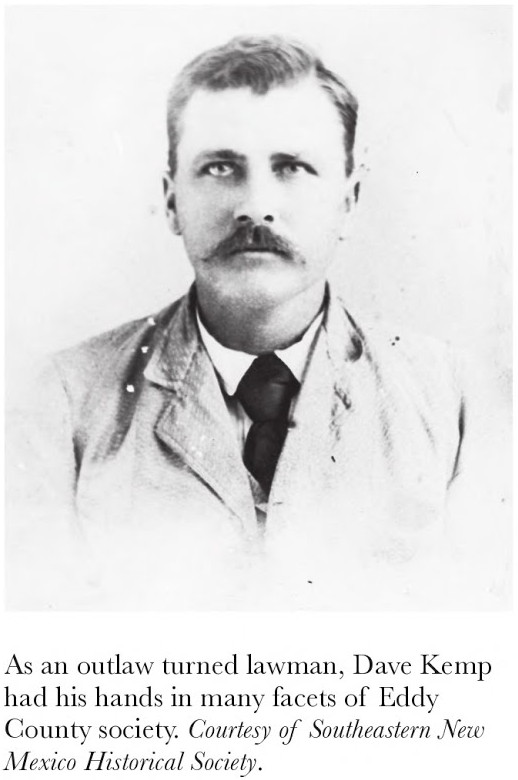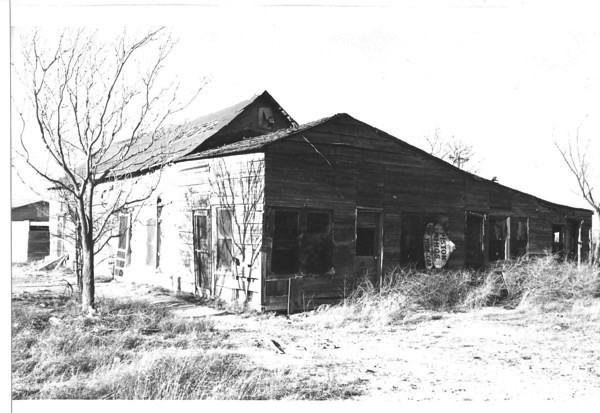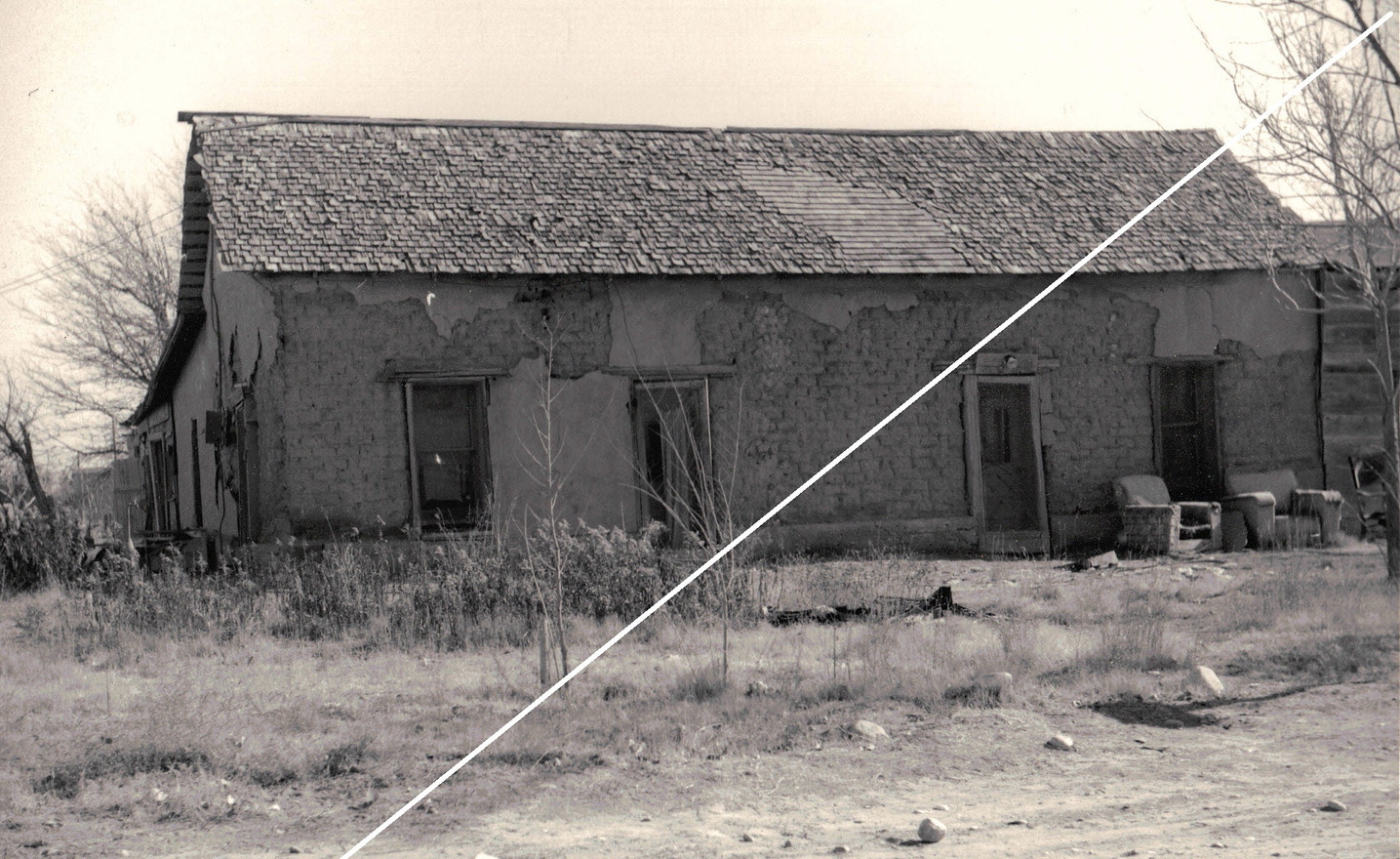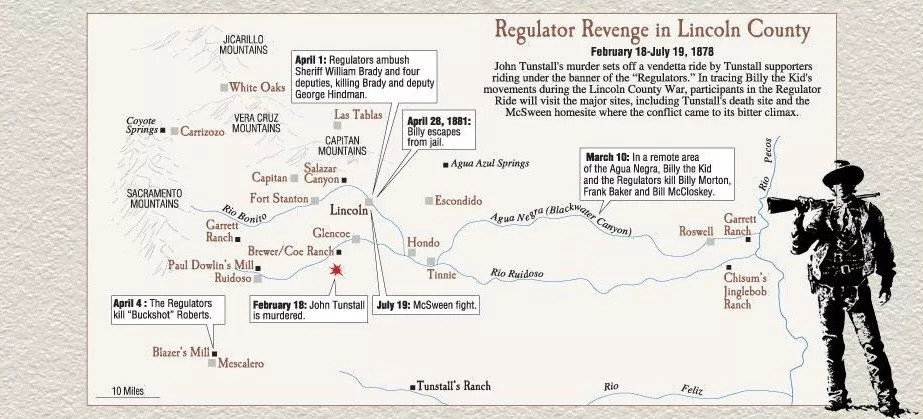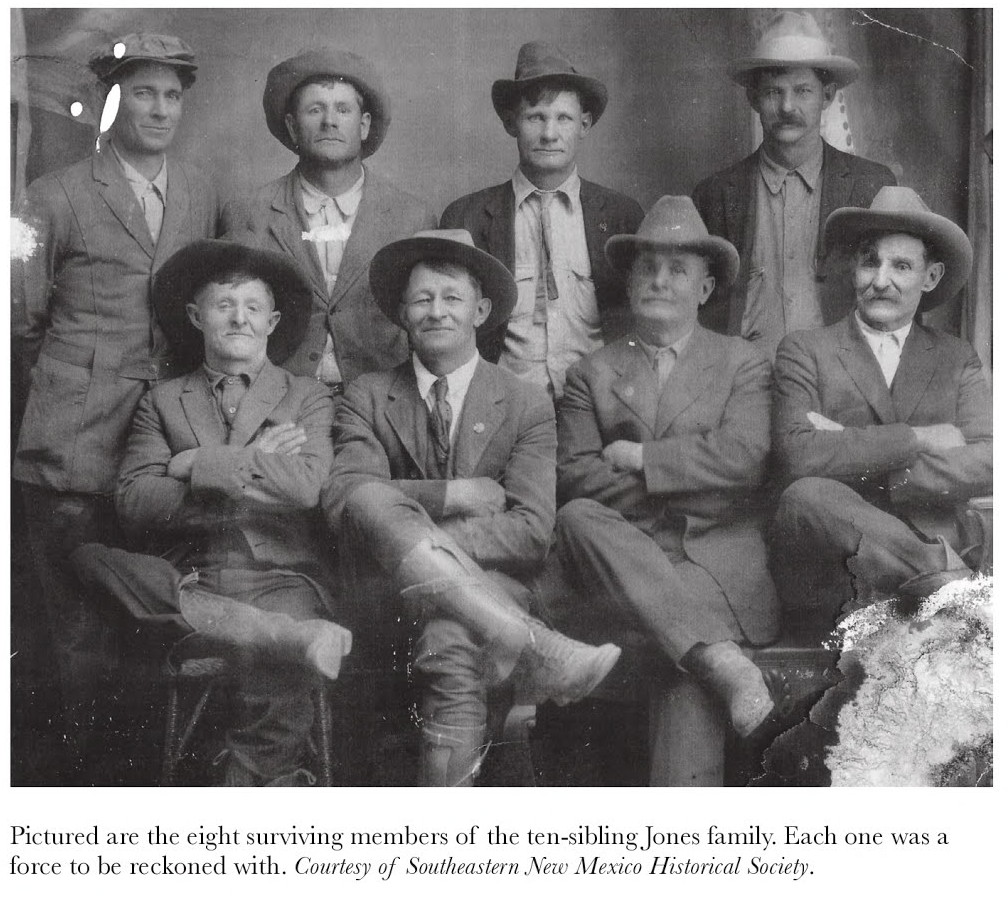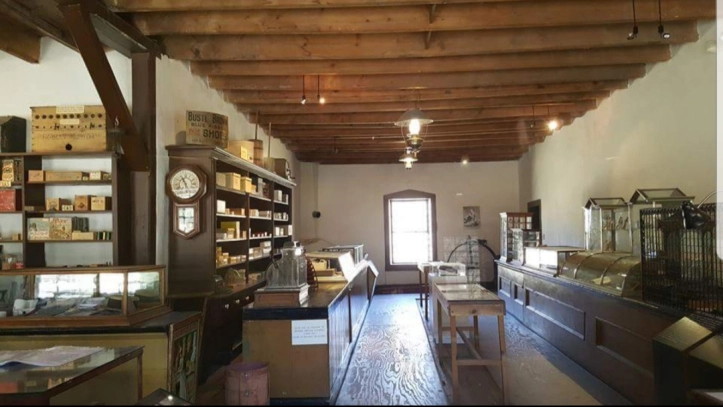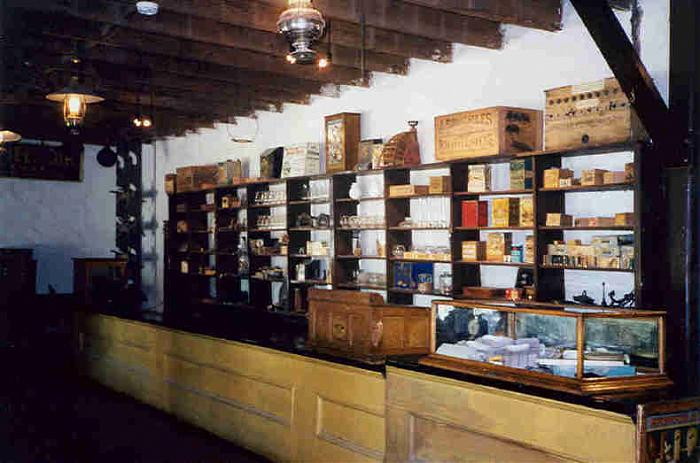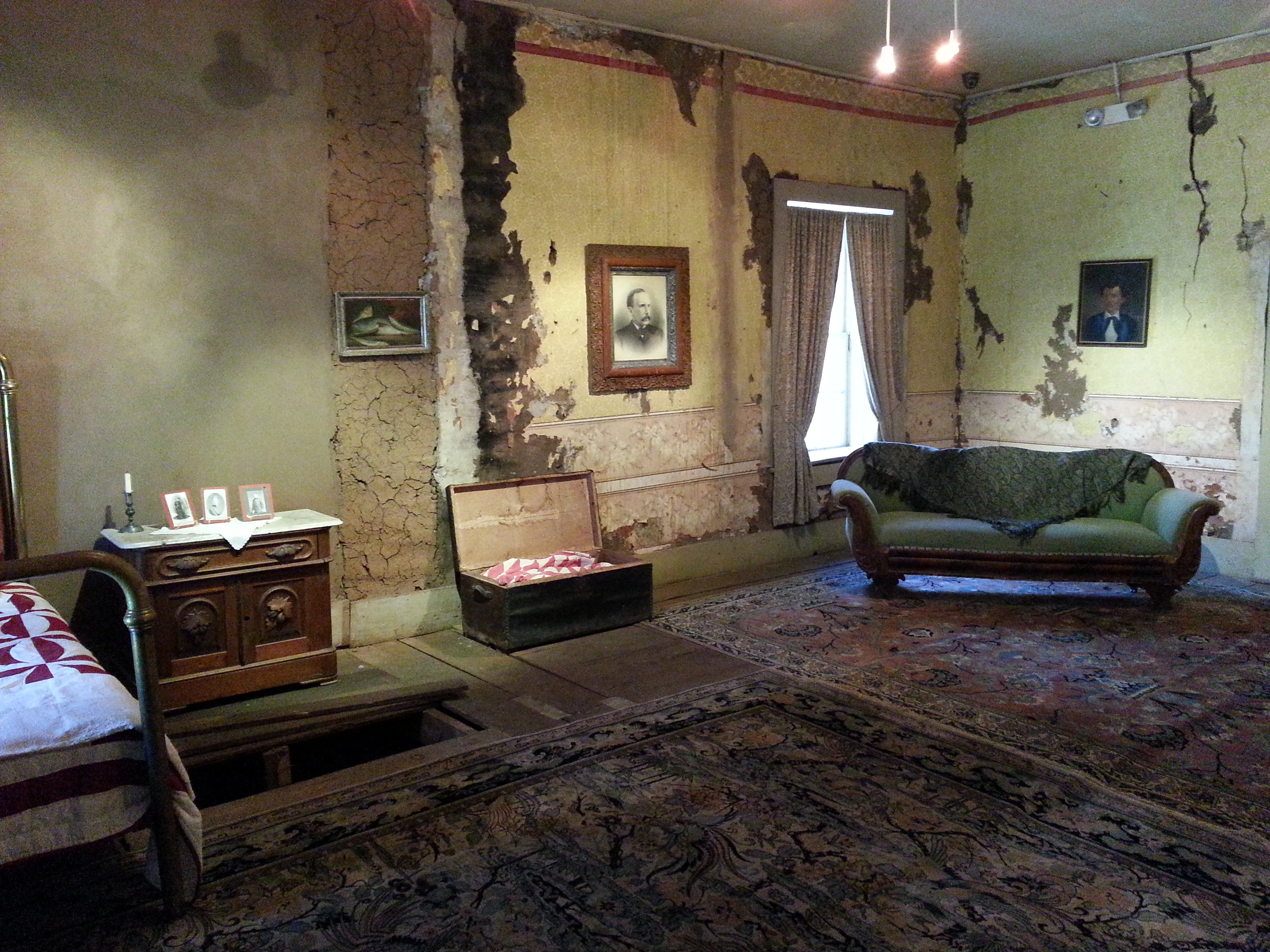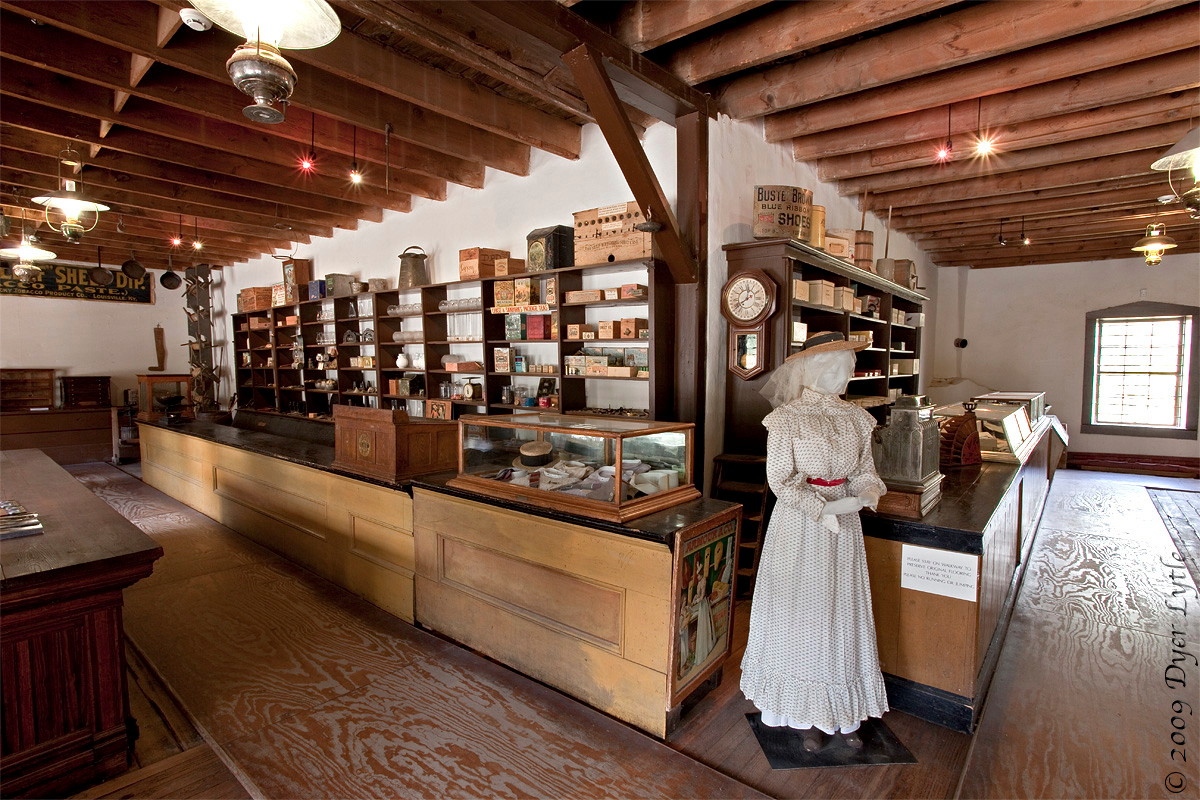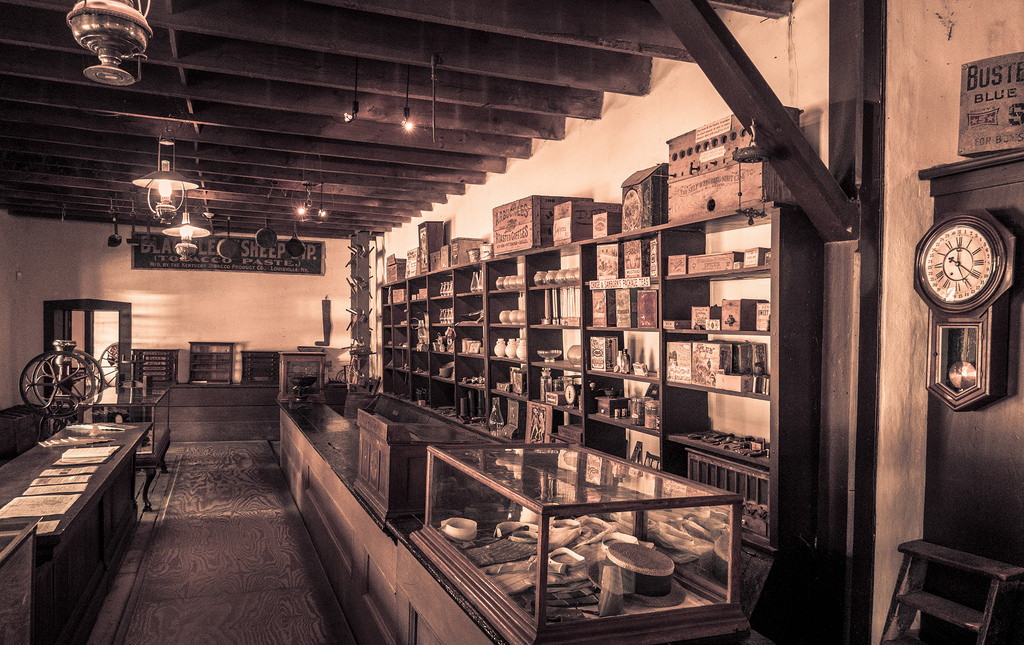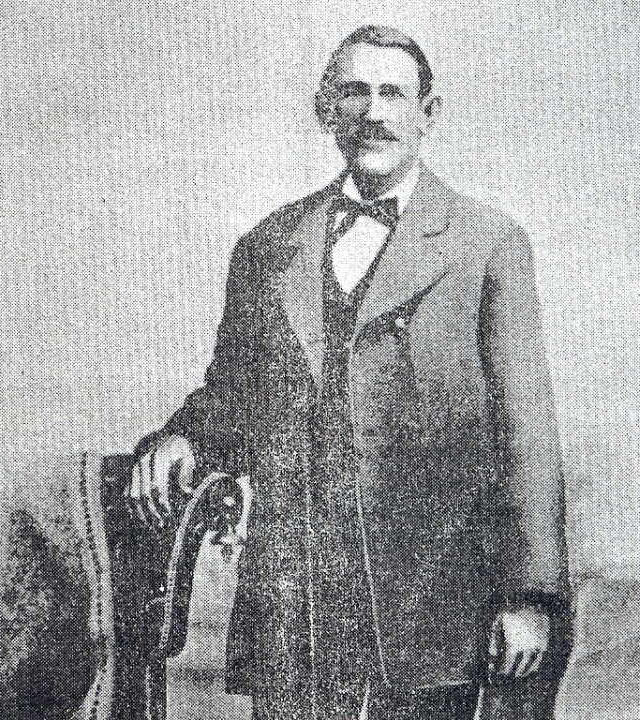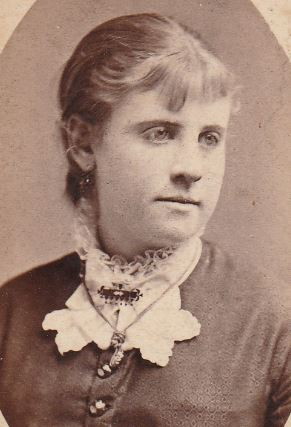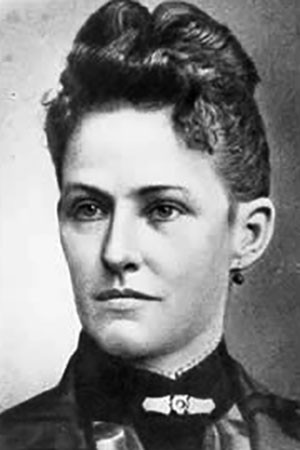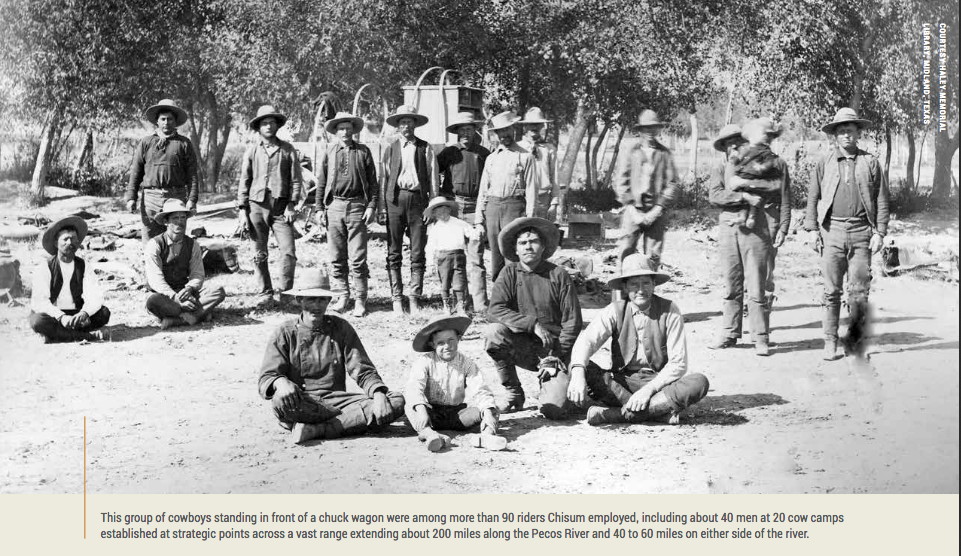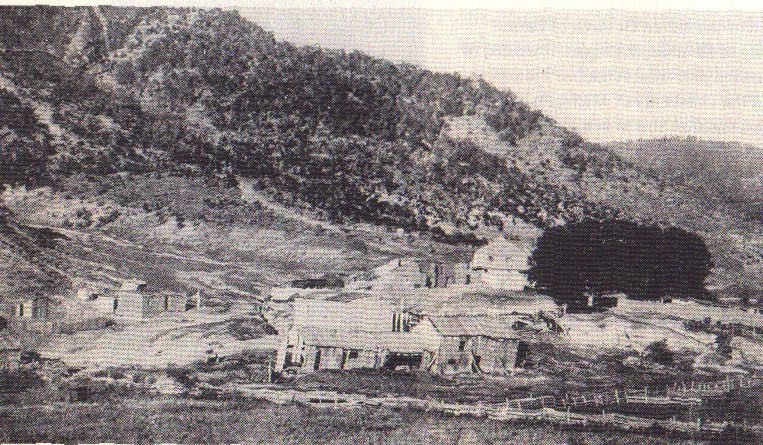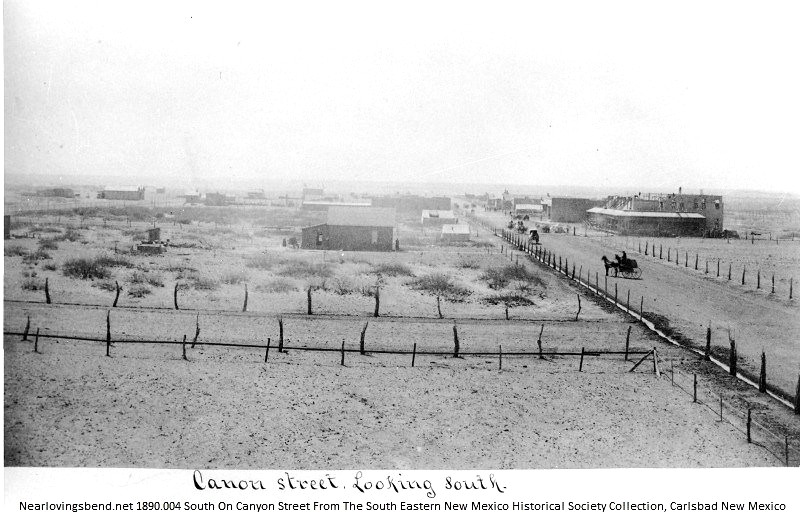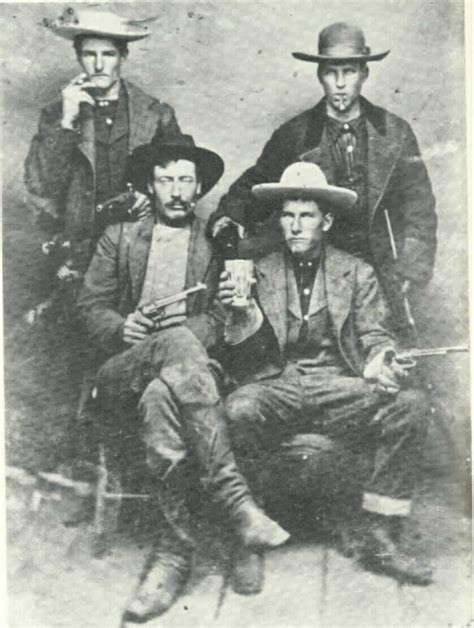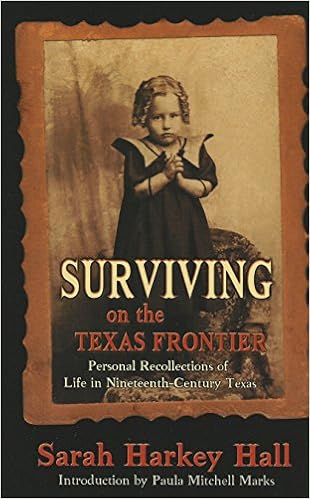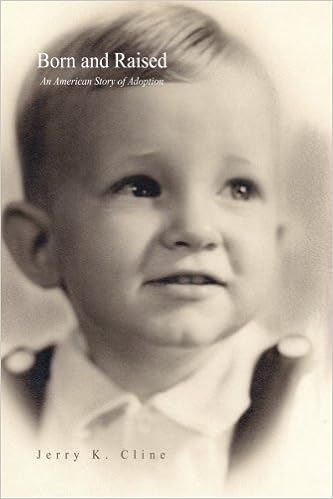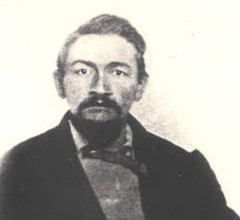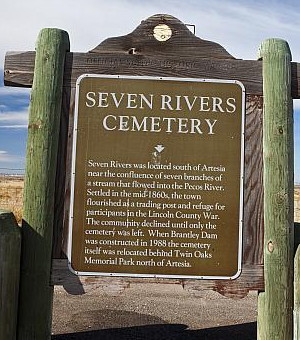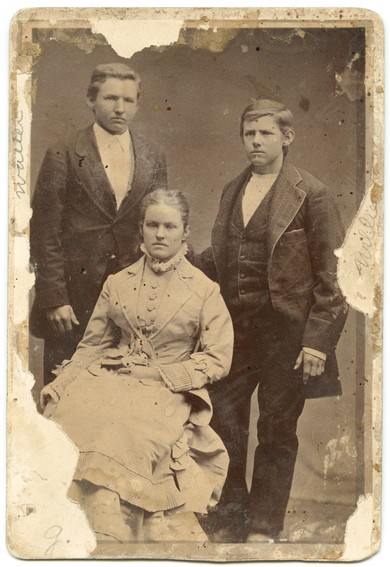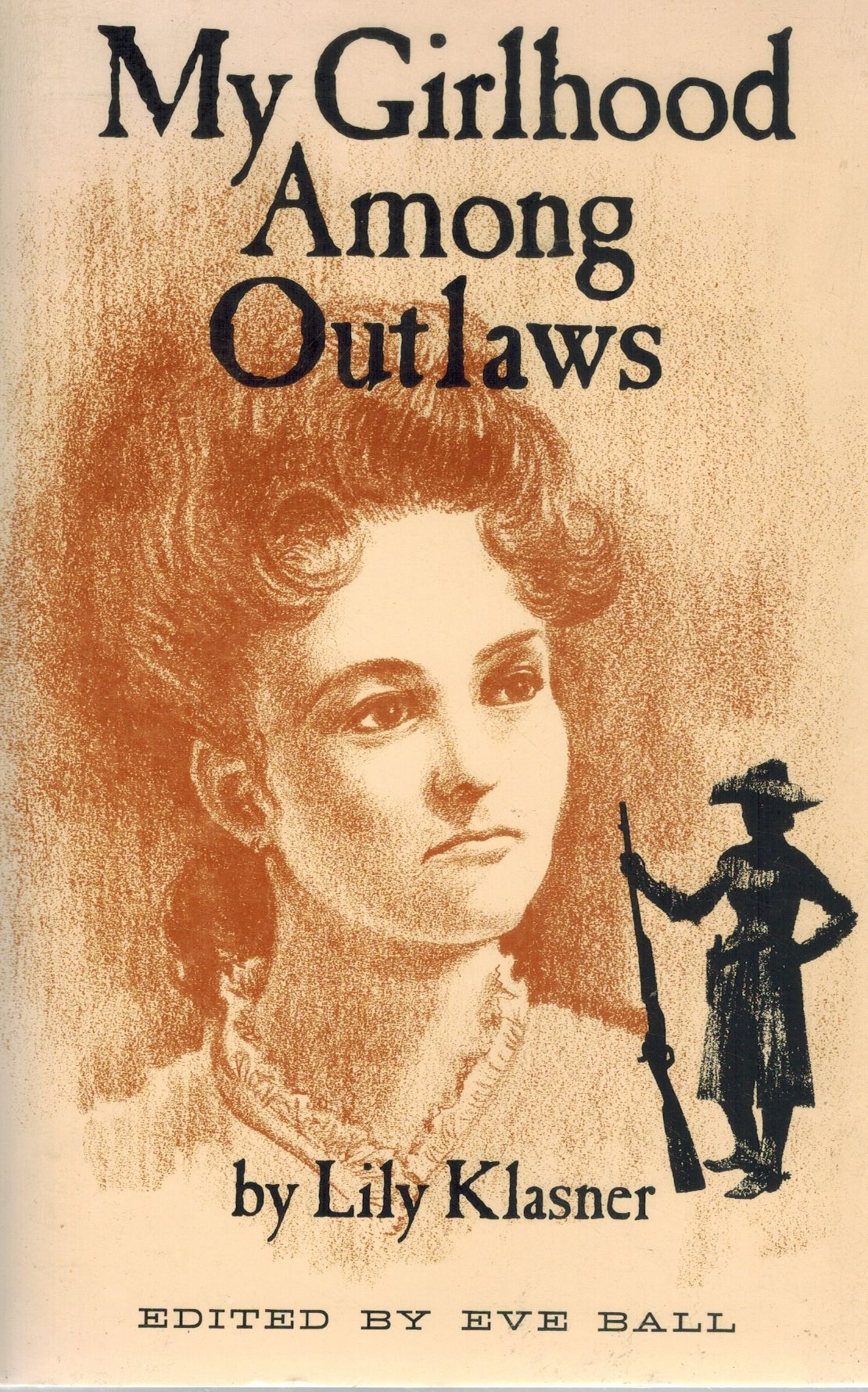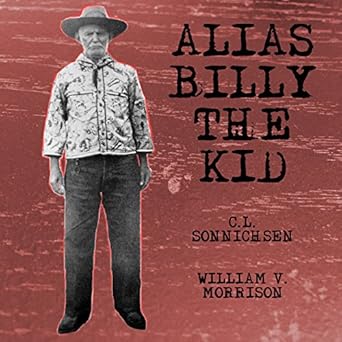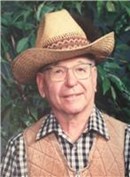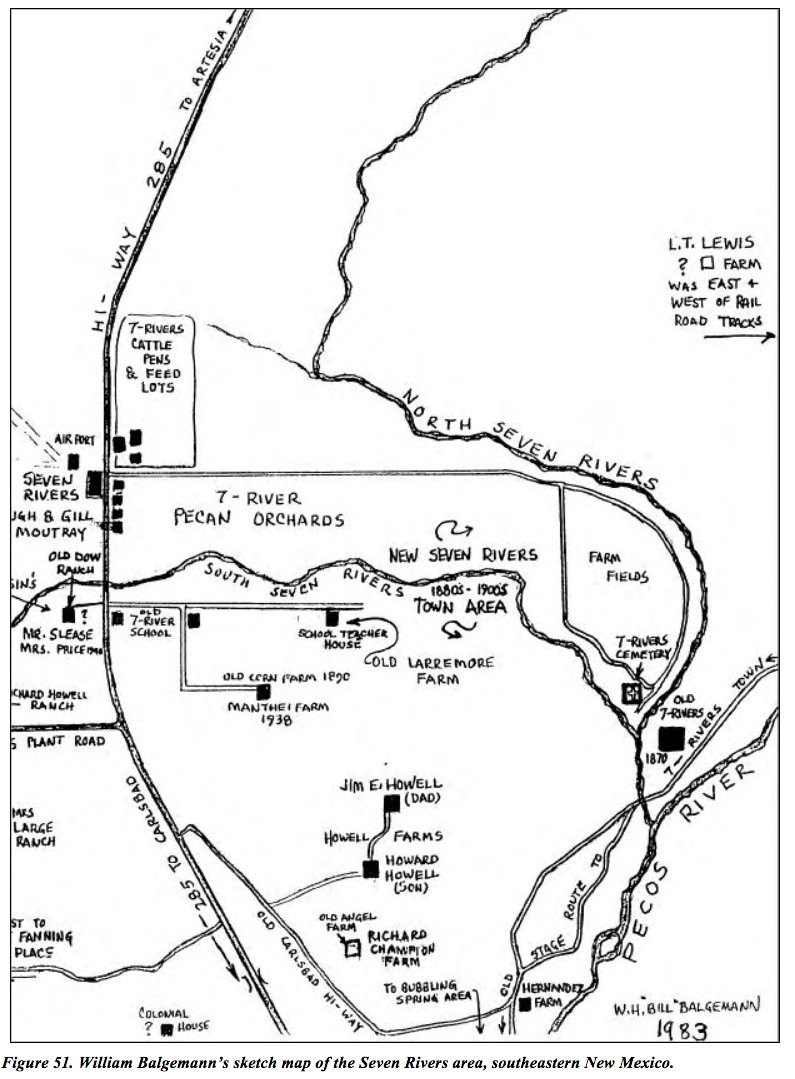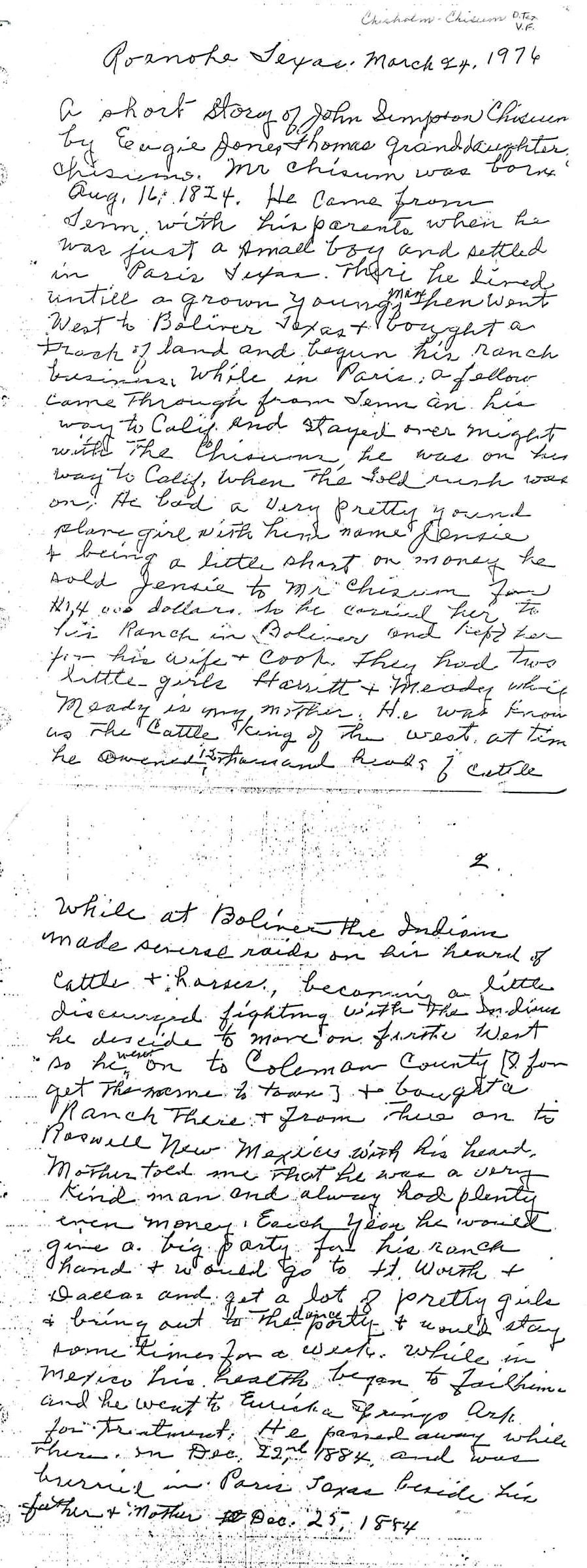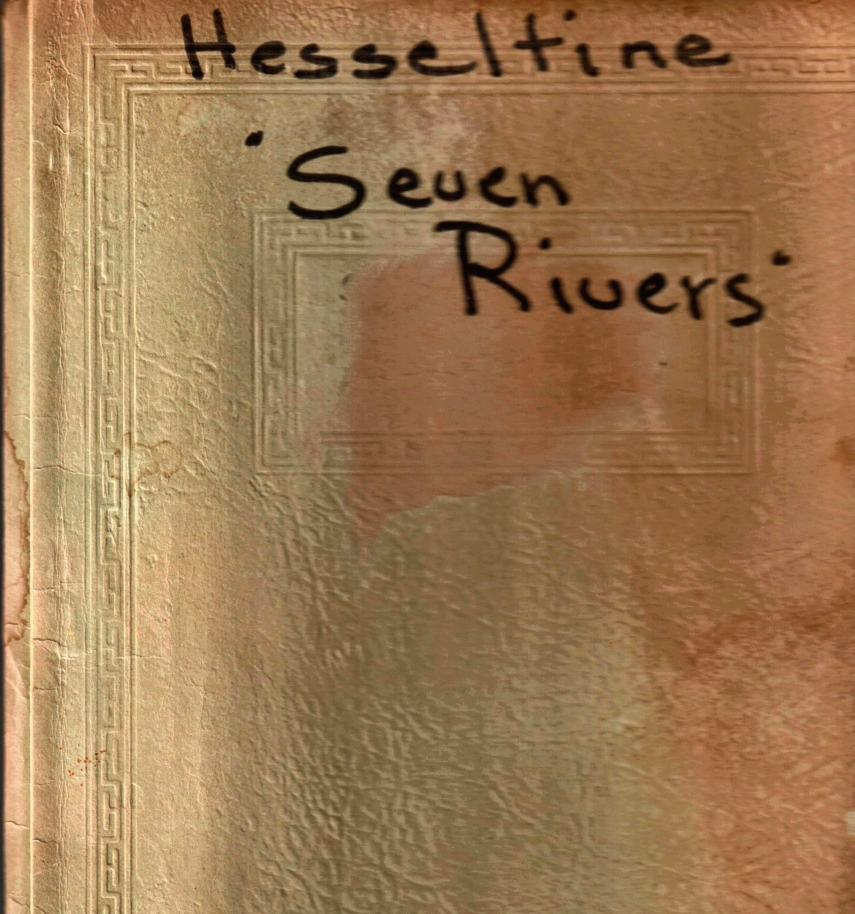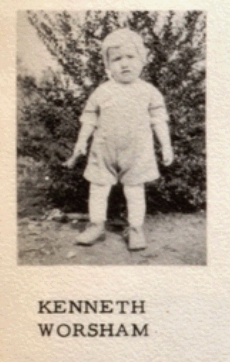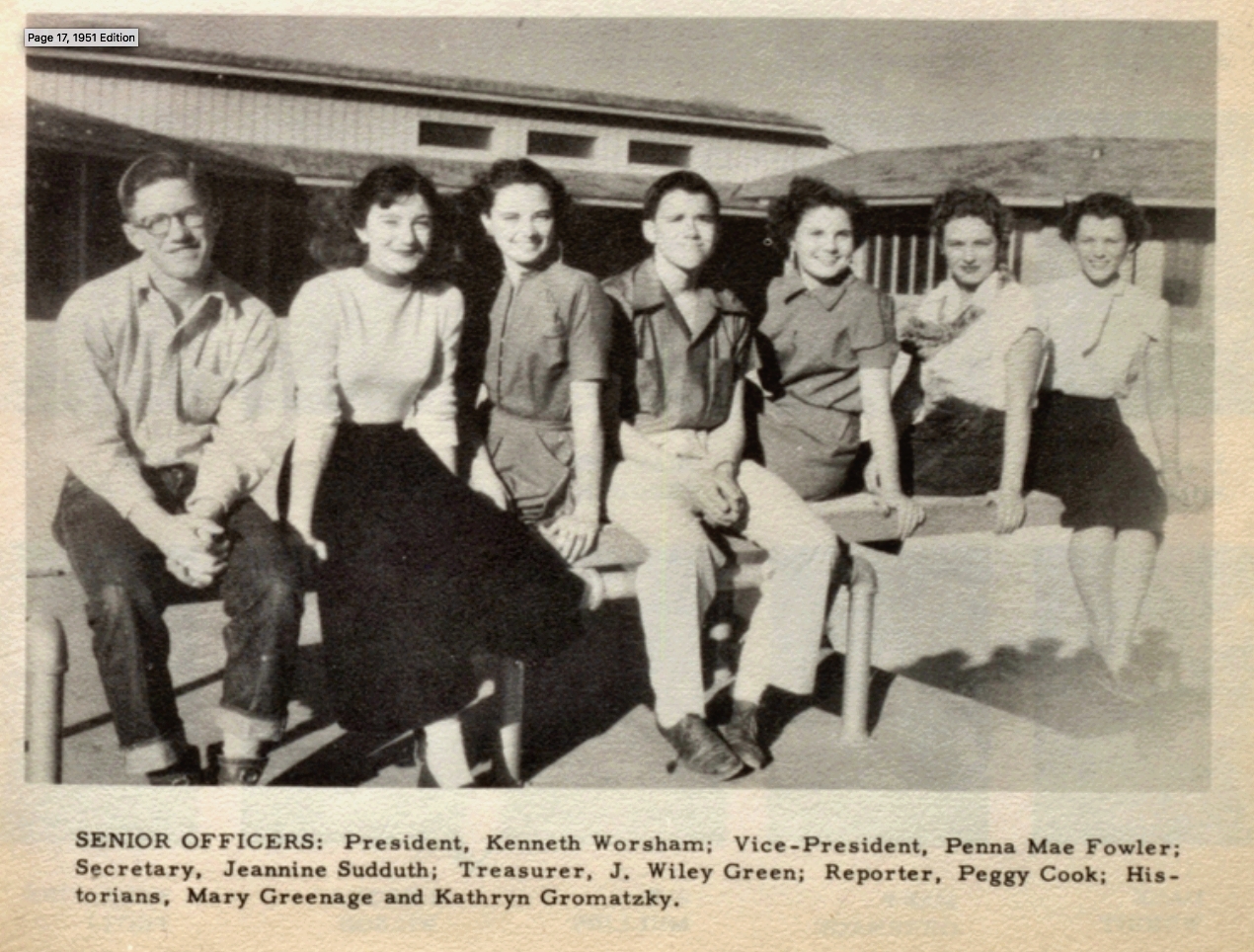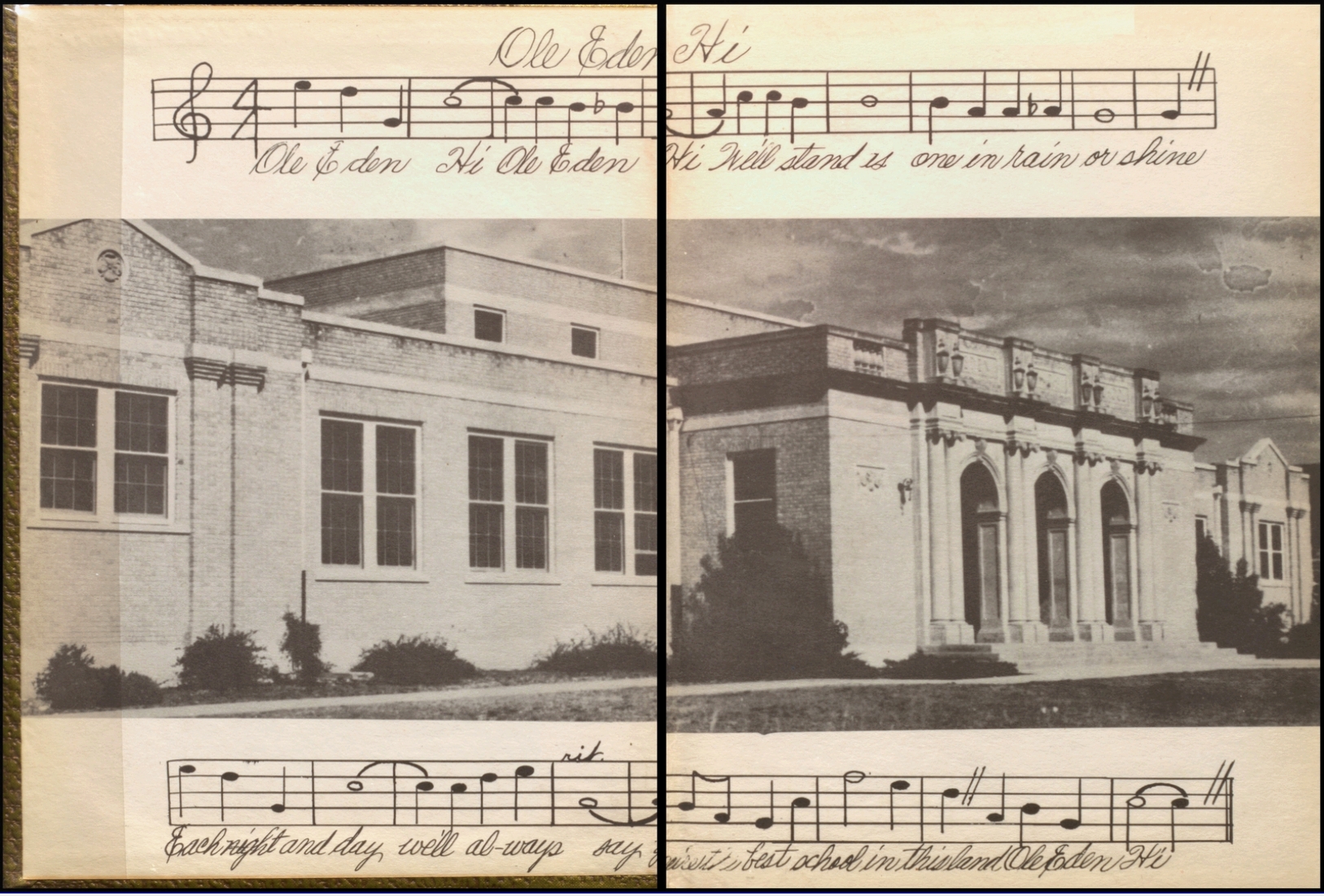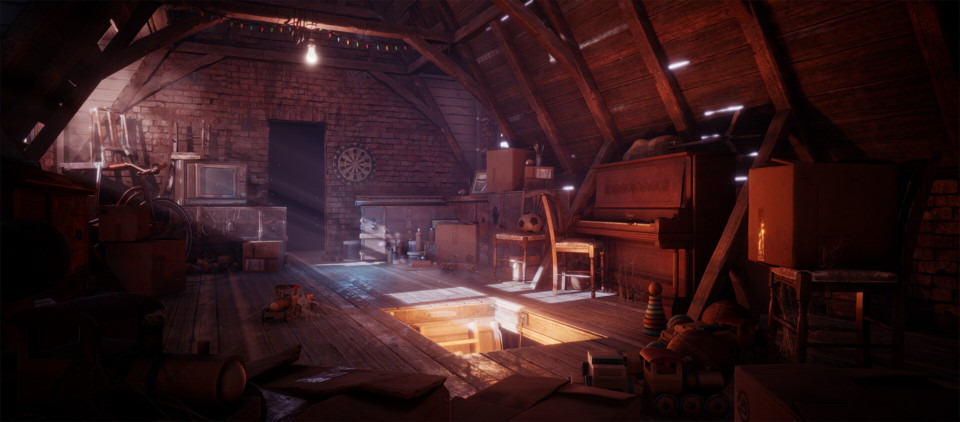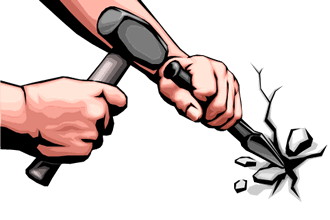

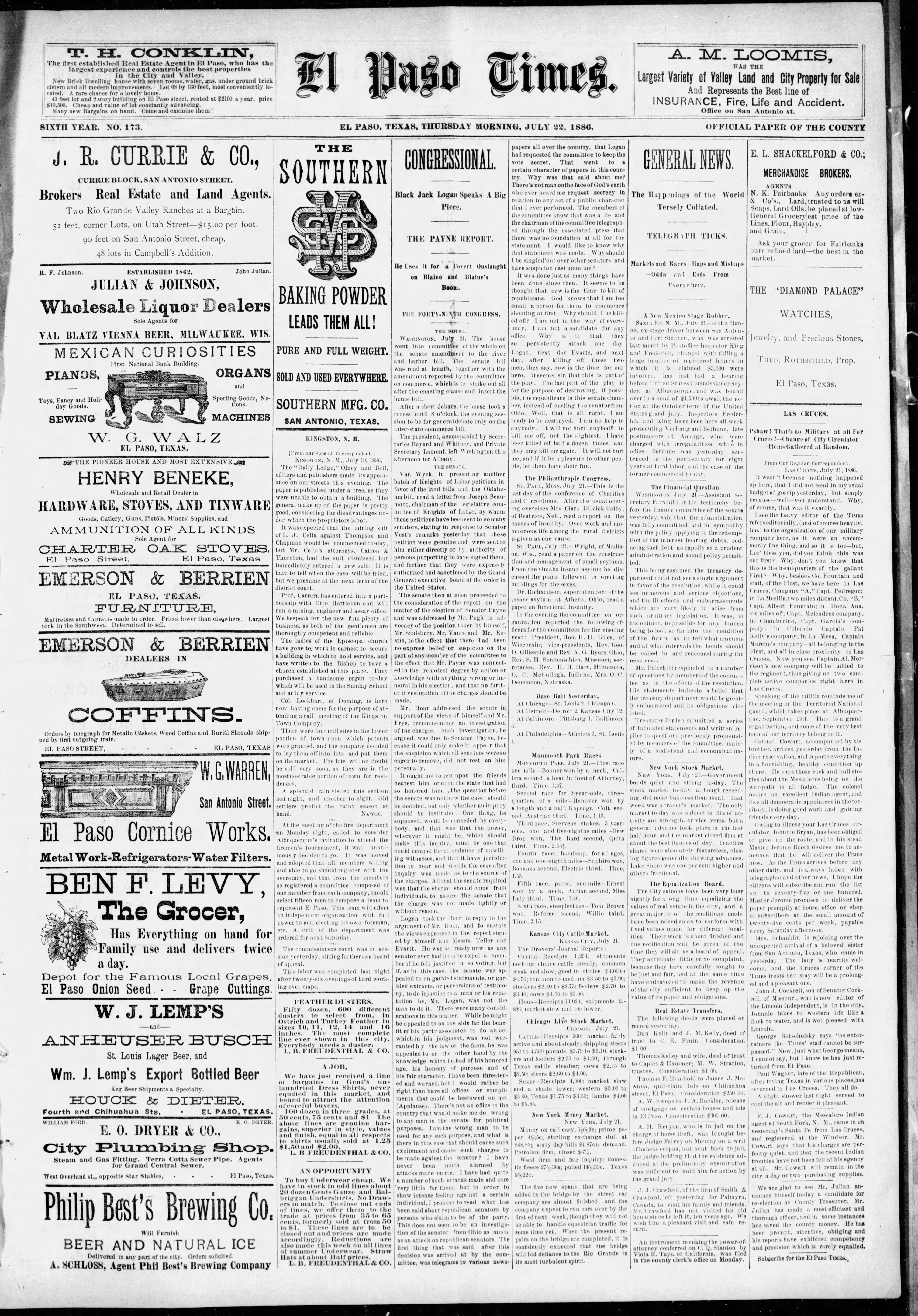
No one was convicted of murdering Albert J. Fountain and his adolescent son, but many people knew what happened, and many more have speculated. He and his killers still make headlines, over 100 years later, but the details get fuzzier as time passes. The rest of Fountain's family was pretty interesting too.
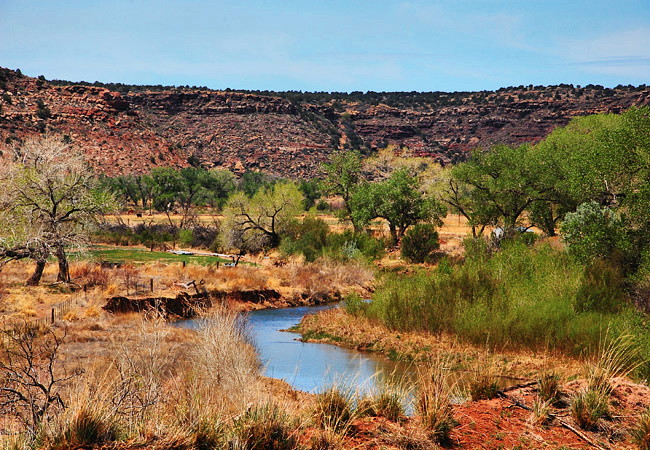
Link to a summary of southeastern New Mexico prehistory up to the time of European contact. Or here for a recent news account.
he high Zephyrs breeze over southern New Mexico, from the continental divide to the Rio Grande valley, across the Tularosa Basin, thence to the Capitan Reef of Carlsbad Caverns fame, over the Pecos Valley, and on into the old Permian Sea. The human story lies far below in the fluted points of the Clovis people, early arrivals of debated origin, the artwork of the Mogollons, from Alaska or Mexico, relics of their successors, the Apaches, chased from Kansas by the Comanches, and, further east, of the Comanches themselves when they strayed in from the Staked Plains. Paleo-nomadic tribes jostled for centuries across the rivers, mountains and deserts, following game, raiding and trading as the spirit moved.
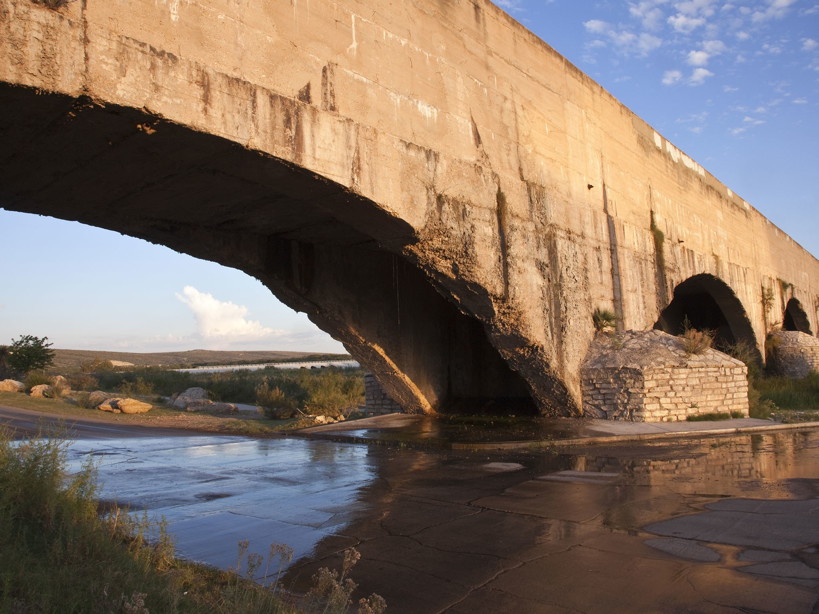
The Flume in Carlsbad, New Mexico is the civilized emblem of what used to be eastern Lincoln County. It followed the founding of Eddy (later Carlsbad), but in the previous decades its location witnessed many of the events leading to the Lincoln County War. Seven Rivers was half-a-day's ride north, and the first herds were pointed right through here on their way to the rustling fields. The picture links to a short summary of that conflict.
Later, the Beringian immigrants took the Europeans for just another tribe in their barter and warring world. The Europeans were outraged. Their technological and social advantages pacified the locals, and these latest immigrants settled into a tribal routine of their own. They began rustling each other's cattle.
Finding the good guys in the New Mexico range wars is a Homeric quest, an odyssey through cacti and rattlers. There were lawmen and scoundrels on both sides. The lawmen themselves were often scoundrels, and most of the scoundrels had their admirers. The Lee and Fountain business in the Tularosa Basin exemplifies the contradictions. The Lincoln County war with Billy the Kid was awash in dual-purpose morality. Billy himself worked for both the Murphy/Dolan and Tunstall/Chisum factions, but his major fame came as a leader of the Tunstall Regulators.
There is recently a cottage industry of Billy the Kid photo authentication, and here is a sample of the output. Most newly discovered photos of Billy the Kid fail what we might call the Orthodontia Test, Billy's gap-toothed sneer. This one does too, but our host offers the all-important attribute of provenance, the chain of custody from eyewitness to present day. His photo may have provenance, but he doesn't actually give us the details to prove it. What we do see is a sleight of digital manipulation. Are we convinced? Could this same technique prove Billy the Kid was da Vinci's model for the Mona Lisa?
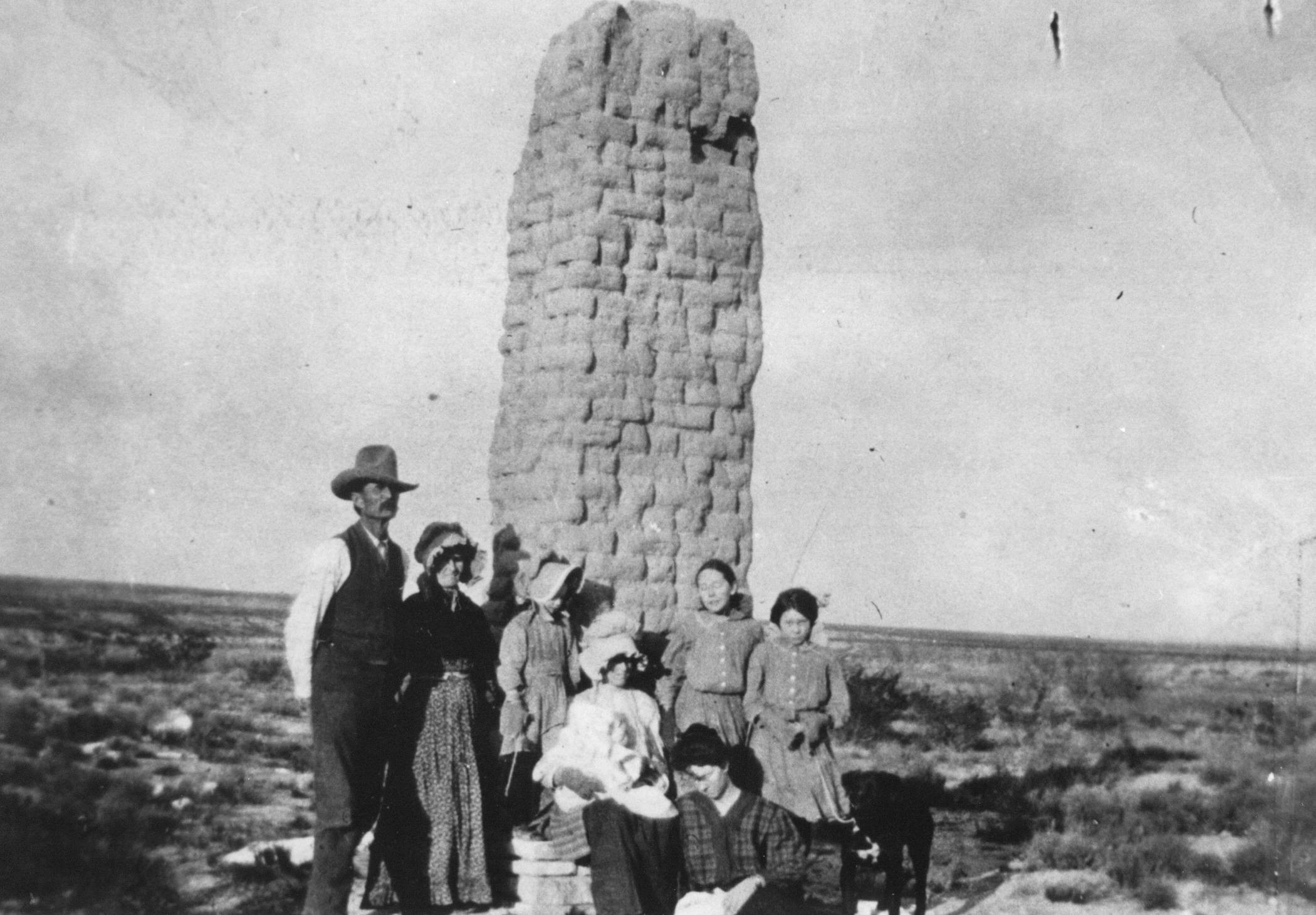
This picture shows what was left of Seven Rivers in 1908. It links to a history of the Seven Rivers Warriors, or you can pop up  a brief history of Seven Rivers, the town, evidently written before Brantly Dam was completed.
a brief history of Seven Rivers, the town, evidently written before Brantly Dam was completed.
lthough Lincoln, New Mexico was the historical touchstone for the war, and the location of its most famous battle, and of the Kid's famous jailbreak, the punch and moxie of the conflict was to the east, in the Pecos Valley. That's where the leather creaked, the running irons scorched, and the hemp stretched. John Chisum, of Chisum Trail Fame, different than Texas' Chisholm Trail, ranched in that region. The Kid was gunned down, if he was gunned down, at Fort Sumner, just north of Lincoln County. And the grittiest Murphy/Dolan stronghold was in Seven Rivers, a rough and bawdy clambake of cowboys and main-chancers in what was then Lincoln County, a little north of present-day Loving's Bend.
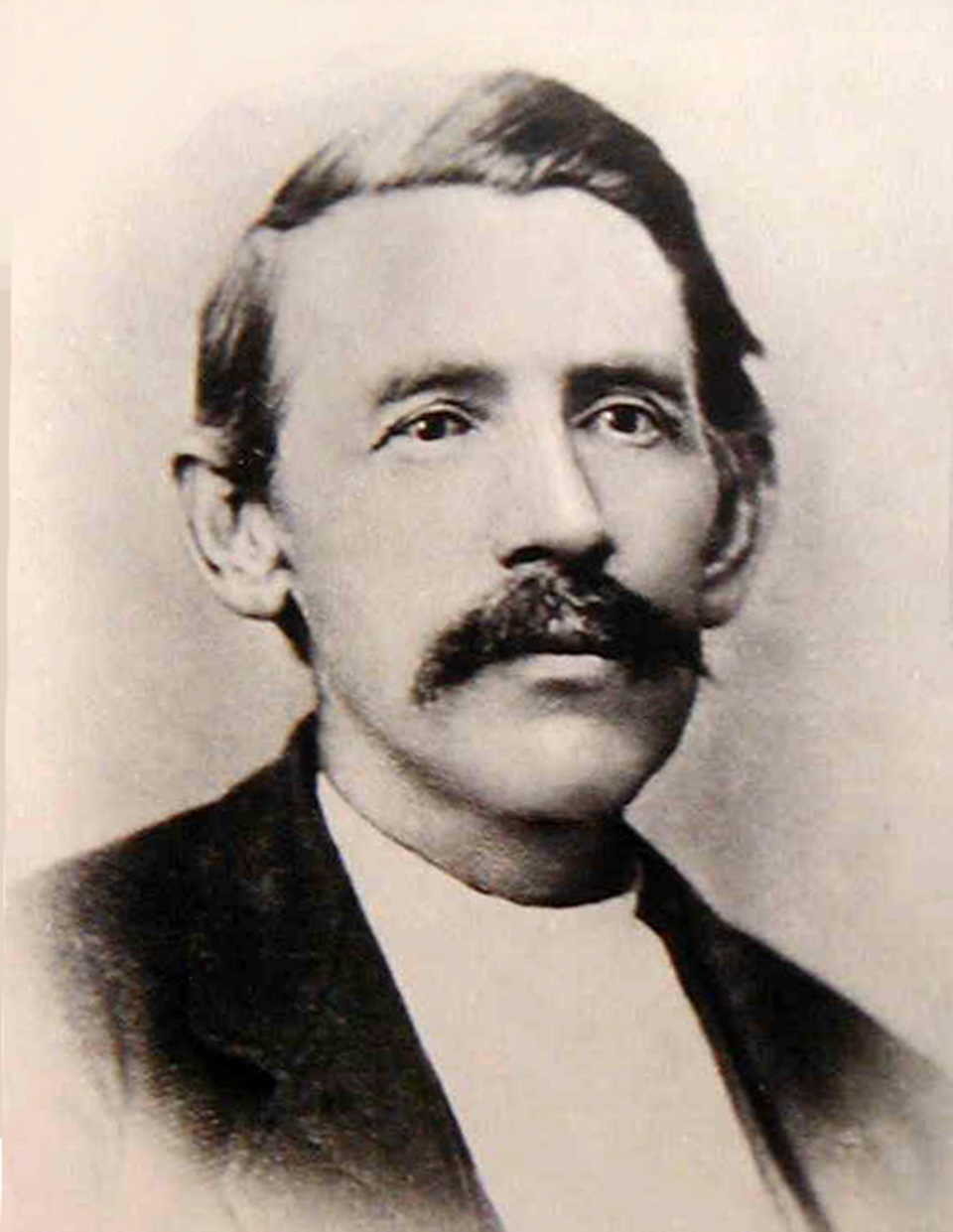
John Chisum was the owner of much of the rustled livestock in the Pecos Valley, and therefore important to the general lawlessness. His picture links to his story. When you see him portrayed on the silver screen, keep in mind that his friend Charles Goodnight said he didn't carry a gun. Goodnight thought that was remarkable; Hollywood ignores it.
Seven Rivers in the 1870s and 80s was headquarters for the major rustling outfits in the Pecos Valley. The Seven Rivers Warriors, and the gangs of Jesse Evans and John Kinney were salient among the Murphy/Dolan confederates. Seven Rivers was exceptionally lawless, with a rough kind of survival-of-the-dirtiest as its moral code.
This frontier mecca of Gehenna was named for the seven creeks that ran through it on their way to the Pecos River, but by the middle of the twentieth century nothing was left but the streams, the name, a cemetery and an almost-ghost town. You could live in Carlsbad at that time and have no knowledge or curiosity of Seven Rivers. In 1988 the Brantley Dam backed the Pecos River over it, submerging the old den of sin beneath holiday motorboats. The Cemetery was moved to nearby Artesia, leaving nothing but a highway marker.
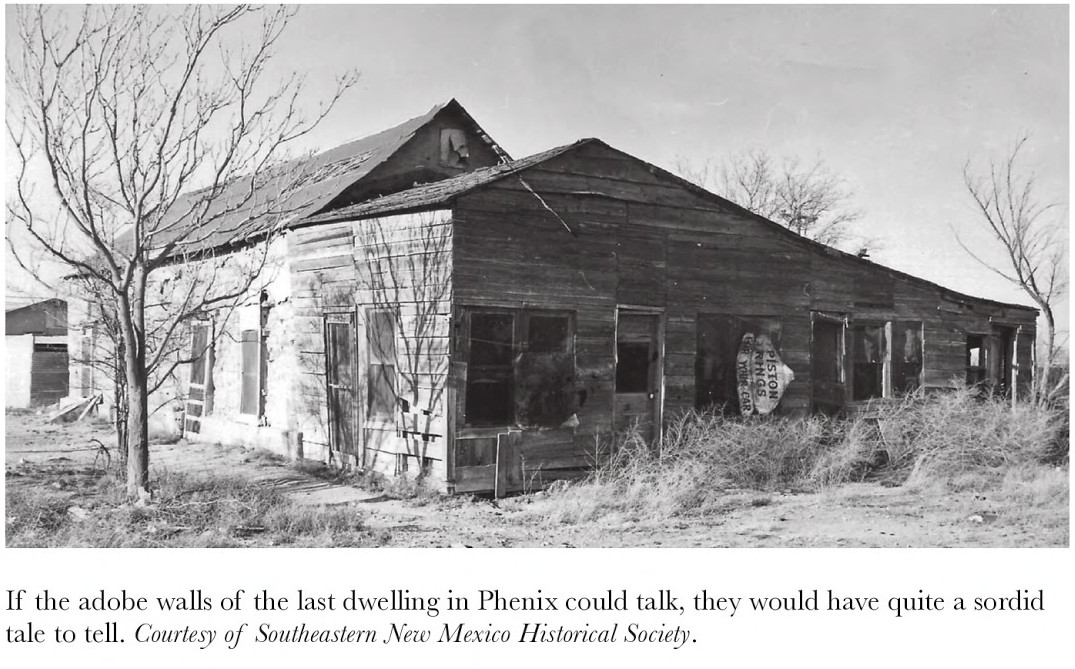
When Charles Eddy founded Eddy, New Mexico, now called Carlsbad, the social tastes of the Ruffian element were discouraged. They settled a little south in a place called Phenix. Its last vestige sank into the dust of a local junkyard a few years ago. The link is to an excerpt from Donna Blake Birchell's excellent book. You should get the book, but here's a taste.
The Carlsbad Community Theatre memorialized Seven Rivers in 1962. The part-time thespians were looking for a low-royalty script for a fundraiser, and hit on the idea of writing their own play. A local music teacher, Kenneth P. (Sam) Worsham, wrote the musical score, other local talent contributed lyrics and lines, and Seven Rivers was reborn as a musical, with dancing, a melodramatic plot, and frontier repartee. The play was a critical success, according to The Carlsbad Current Argus. The list of contributors is a Who's Who in 1960s Carlsbad theater.
The news clippings at left give us a sense of the contributors, and the dramatic gravitas of their efforts. The Seven Rivers composer, Sam Worsham, was the music teacher at Alta Vista Junior High at the time. After Carlsbad, he became Lt. Col. Worsham, in an Army career during which he composed a march for his unit (see clip at left). He settled in Huntsville, Alabama, retired, and took up real estate. Colonel Worsham was kind enough to look through his attic, but found no artifacts from the play.
My sister discovered a copy of the Seven Rivers script(see nearby). It accurately points out that Seven Rivers was in Lincoln County in the frontier days. No other historical accuracy is found. The last few pages have the only surviving fragments of Sam Worsham's musical score. The main lyricist was Dee Thornton, a graduate of Carlsbad High School. The script was collaborative (see clips at left for names of collaborators). By the way, Colonel Worsham also wrote the musical piece, "Five Days in Hawaii," 5 January, 1970. Sam shared a few thoughts with us about the play, and you can see them in the link at left.
You'll recall there was a movie about John Chisum. The title role was played by another John, surname Wayne. If you expect little history in such a movie, you might still be disappointed. The news clipping nearby from September 28, 1969 notes the movie's reality credentials.
Later, after the Lincoln County War had burned out, its antagonists bought out, killed or neutered by politics, the Eddy brothers moved into the Pecos Valley and established their eponymous town south of Seven Rivers. There, in the 1890s, the new community pursued a more conventional notion of law and order. Like many sprigs of frontier civilization it banished its undesirable elements to a suburb south of town, this one called Phenix. This Eddy red-light district soon rivaled Seven Rivers for shootings, cuttings, gambling, drunkenness, harlotry and everyday meanness. A spasm of zealous law enforcement put it out of business around the turn of the century, and it was subsumed in the growing town, renamed Carlsbad after a German resort town, perhaps as a business aspiration.
By the time I moved to Carlsbad in 1955, what was then known as Little Phenix was a seldom-mentioned embarrassment from the town's past. Physically, it was just a derelict old shack in a junkyard across the street from the Steven's Motel. Those that knew about it didn't talk about it, and no one else cared.
In 1948 an old timer in Carlsbad, D. R. Harkey, called "Dee," released a memoir called "Mean as Hell," in which he took credit for cleaning up Phenix. There was a little grousing at the time by other old timers about Mr. Harkey's claim to being the broom of the Phenix clean-sweep. There was a whiff of a sense he'd exaggerated his contributions, but the book was well received and has become acclaimed as a more or less credible account of Mr. Harkey's importance to western history.
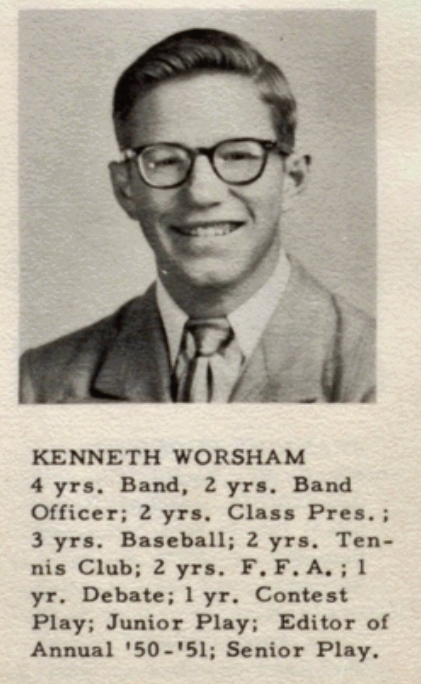
This picture of Sam Worsham, as a graduating senior at Eden High School, Eden, Texas, links to a few additional thoughts about him, and the play.
Mr. Harkey's book is delightful entertainment, crammed full of daring, but believable accounts of overcoming the bad guys. Harkey's method of law enforcement involved a minimum of shooting, and being shot at, and quite a lot of intimidation and wrestling. Wrestling, in this context, is understood in the old frontier sense as any sort of kicking and wrenching that didn't involve things sharper than teeth or more invasive than thumbs. Harkey, who once broke an axe handle over someone's head during a business disagreement, explained his effectiveness by noting that most everyone he encountered was mean as hell, and he was meaner than most.
Dee Harkey left law enforcement and became a reasonably well off rancher in the Carlsbad area. He had extensive land and ranching operations until the depression caught up with him in 1933. A local businessman, A. J. Crawford, loaned him some money to tide him over, and wound up owning most of his property. Harkey moved in with his daughter, a local chiropractor, at her home in Carlsbad.
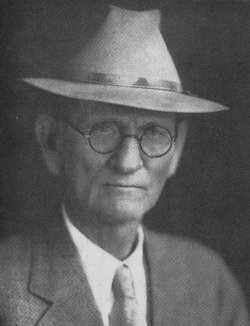
Dee Harkey styled himself as the lawgiver of Phenix, in his 1948 book, "Mean as Hell," and we know he was operative as a lawman in several capacities prior to going full time into ranching. The picture links to the musings of a local writer, Lew Rockwell, in a blog posting of several years ago. The picture links are broken, but the prose is interesting.
Mr. Harkey's book brought him a measure of fame and he passed away in 1958 as a local celebrity. After my family moved to Carlsbad, my brother borrowed a copy of Harkey's book from an ROTC buddy, Bobby Lee Wells. I planned to read it but by the time I got around to it, Mr. Wells had recovered it and decamped for parts unknown. Things happened, time passed, and I finally got my own copy in the early 90s from a bookseller specializing in out-of-print books. Now, of course, it's one click away on the Internet.
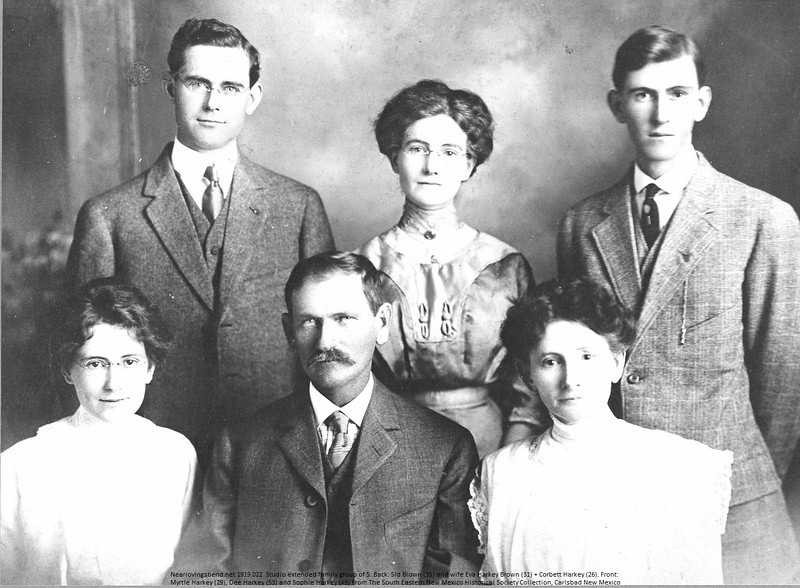
Dee Harkey began law enforcement in Texas, and when he moved to Carlsbad he had a varied career, including his late-in-life foray into writing. The link is to his Find-a-Grave site, which includes a bio.
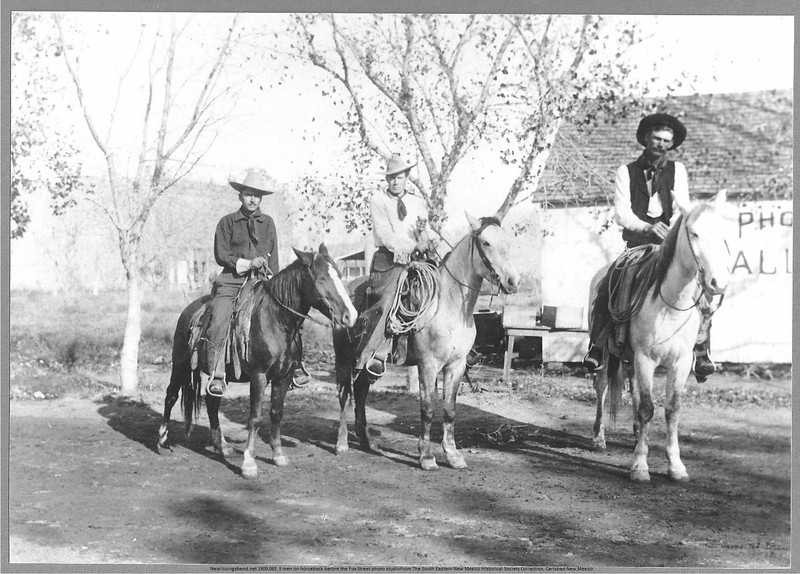
Jerry K. Cline is a late chapter in the Pecos Valley saga. He's written a fascinating book about his personal quest for identity, and you can get a copy from a link to the left. In the meantime, this picture of Dee (on the right) and friends links to a glimpse of what Dr. Cline found out about him.
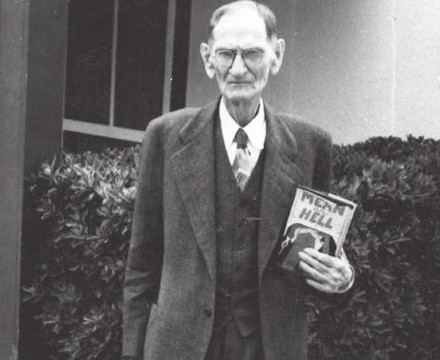
Dee Harkey's book, "Mean as Hell," was republished with a brand new cover. His picture from 1948 links to a purchase source.
s I gathered some research notes on Mr. Harkey's book for this web page, I found a new chapter written by one of his descendants. Jerry Cline grew up with adoptive parents, and had little interest in his unknown birth parents. After a PhD in mathematics from Purdue, a career in aerospace doing rocket science, and helping design the uphill trajectory of the space shuttle, Dr. Cline started wondering where he came from. He published his findings in 2010 as, "Born and Raised: An American Story of Adoption." You should read his book, it's exciting and informative, but I'll give you a few hints about why it's on this page. His father turned out to be our Dee Harkey, and Cline was conceived, though not born nor raised, in Carlsbad, New Mexico. He's a very late spark off the Pecos Valley frontier anvil. And he's a spark almost not struck. Harkey himself was an orphan at age 3, on the Texas frontier, raised as one of seven children by an older brother, a miraculous survivor of the Comanche raids of 1860-70. Cline arrived at the end of a slender thread that nearly broke on the plains of Texas. Fiction can't compete with this stuff.
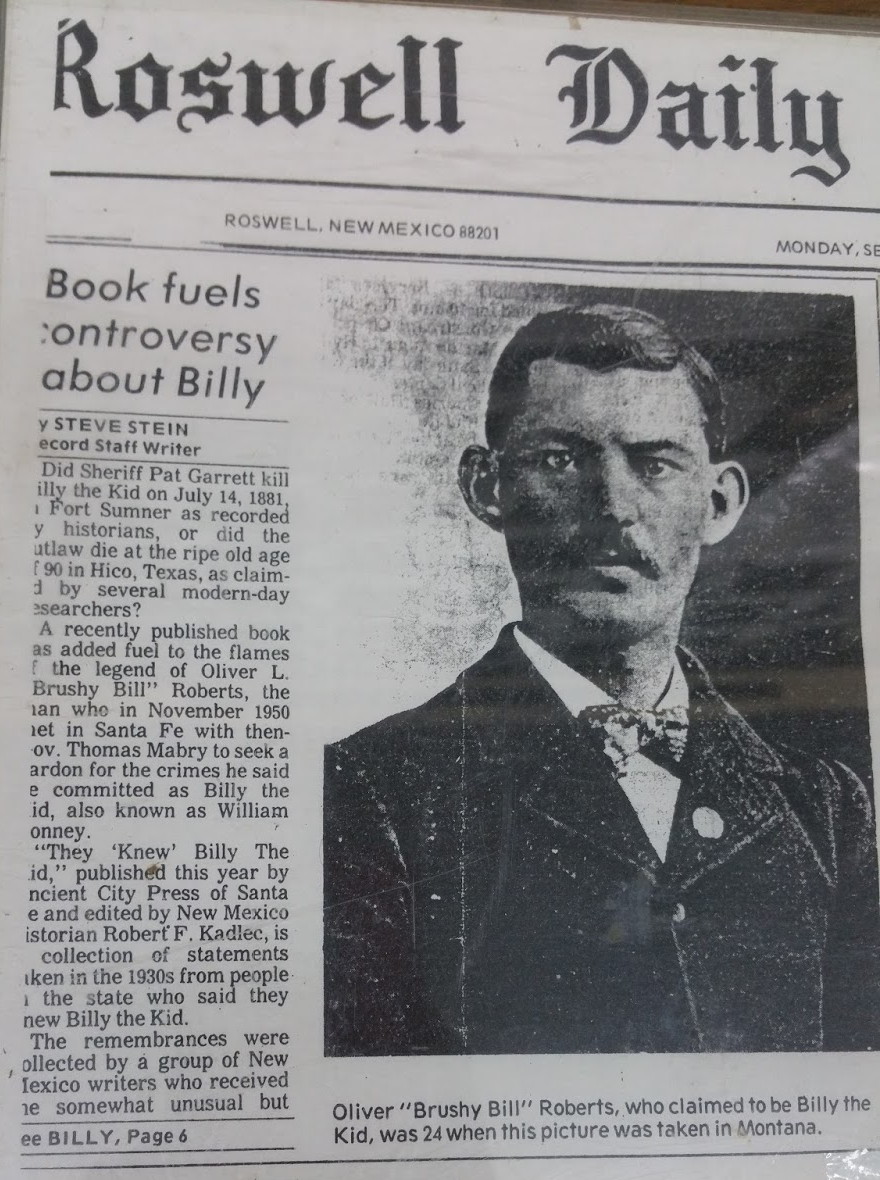
An unlikely looking old fellow, who'd previously claimed to have ridden with Buffalo Bill, as well as Jesse James, turned up in New Mexico claiming to be Billy the Kid. The link is to a recounting of the tale.
From the Rio Grande to beyond the Pecos, from the early days until his untimely death, Pat Garrett was a man for all southern New Mexico seasons. He lived in Roswell for a while and became a principal in irrigation projects on the Pecos River. And, of course, he said he shot Billy the Kid in Pete Maxwell's bedroom in 1881. Almost everyone believed him, although pretty quickly there were those rumors about somebody else being buried in the Kid's grave. In 1948 Billy, and therefore Garrett, flashed back into the news when a search for another old-timer unexpectedly resurrected the Kid himself, in the body of Brushy Bill Roberts. There he was, suddenly parading across the southern New Mexico plains again. He even went up to Santa Fe to demand that pardon the governor had promised him decades before.
Brushy Bill Roberts was a very convincing Billy the Kid. No less an expert than well-known southwestern historian C. L. Sonnichsen co-wrote "Alias, Billy the Kid," a book about Brushy Bill's claims. Sonnichsen finally concluded, "If he's not Billy the Kid, who is he?" Medical examinations claimed he had scars consistent with the Kid's known wounds. He told very convincing stories about his escape from Garrett at Fort Sumner, and his escape from the Lincoln County Jail. It was said he knew details no one else could have known. How that was determined always involved a little arm waving. There are a few news clippings about Brushy Bill prior to his admitting his true identity. They describe him participating in local parades in Texas as a well-known old timer who'd ridden with Buffalo Bill's Wild West Show. He reportedly had told folks he'd ridden with Jesse James, but maybe he was just making that up. A few decades before there was a Brushy Bill "Jones" in Sacremento, twice arrested for drunkenness, twice ordered to leave town, and twice promising to do so. I'm with Sonnichsen. Who was this guy?
There was even talk of exhuming Billy the Kid and doing something forensically probative to settle the matter. Aside from the legal problems of exhumation, and the scientific problems of identification, there was another embarrassing issue. We really don't know who is buried in Billy the Kid's grave. Yes, there is a grave, and a headstone. Trouble is, the original wooden marker was vandalized. There are also stories of a flood washing the markers away. When the permanent headstone was planted in 1932, there was a little guesswork. So far, no one has figured out how to authenticate the location.

C. L. Sonnichsen gave Brushy Bill some street cred, but the established facts of young Antrim's life are more interesting. The image links to a True West article about following Billy's trail.
A lot has changed since the last Clovis point was chipped from eastern New Mexico flint, the Mogollons dropped their last potsherd in the Tularosa Basin, and even since the Comanches greeted Oliver Loving at Loving's Bend. In fact even the scofflaw and breakneck pugnacity of the old cowherd society is so far from our Internet culture it seems as ancient as Troy. It's appropriate its Seven Rivers headquarters was swallowed, like a cowpoke Atlantis, beneath the rising waters of modernity. Still, there is the road sign. And the Lincoln Courthouse is much the same. Billy the Kid must be buried somewhere by this time. And the Zephyrs still fly in the high, thin air above the alkali flats and disappearing horny toads, at least for now.
Have a look at the news clippings selected in the panel at upper left. They give a feeling for the temper of the times, and do a good job of recalling the politics and culture. The other links on the page give a good summary of where things stand today.
If you want to get a feeling for the geography of the business, you can poke around with the maps below, and above left. By the way, in those days, Lincoln County was the biggest county in the United States and its territories.
New Mexico territory postal routes in 1898, courtesy of The University of Texas.

